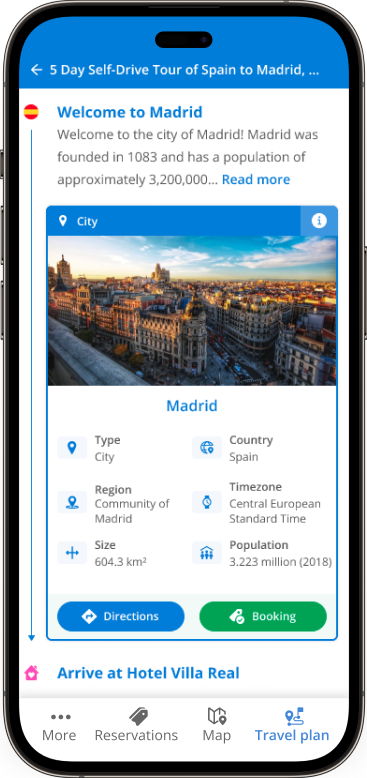
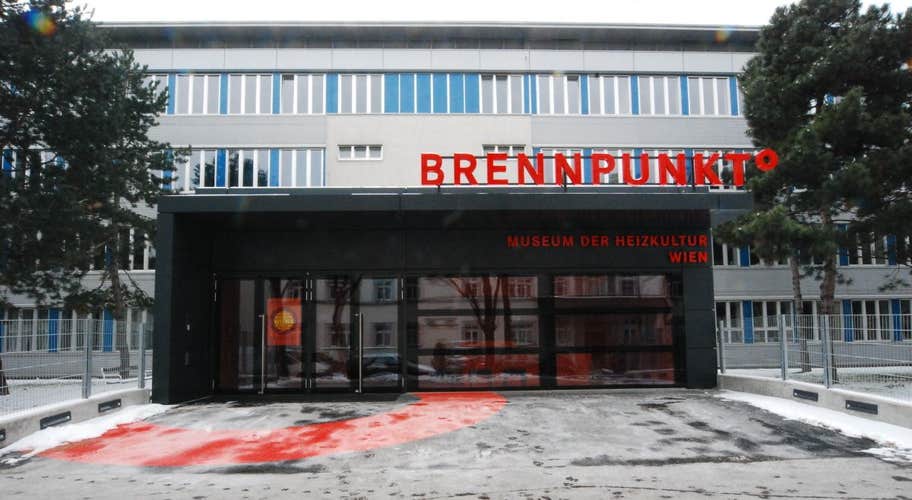
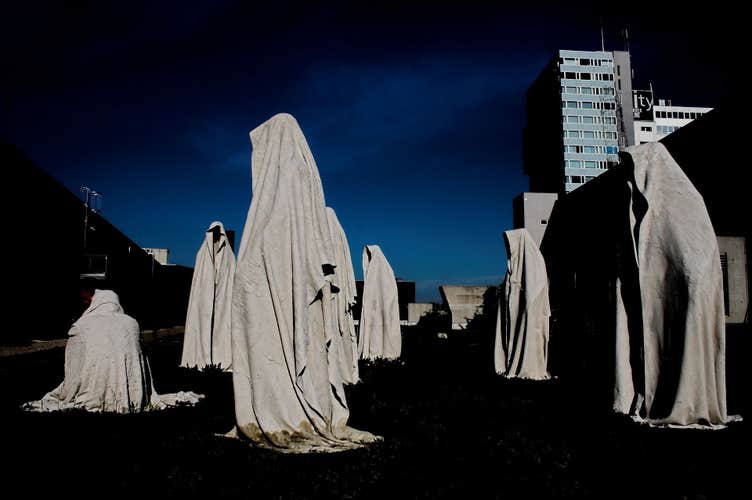
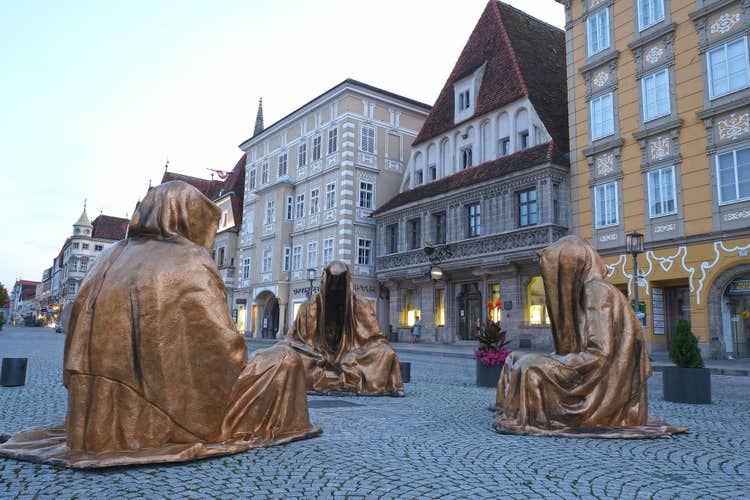
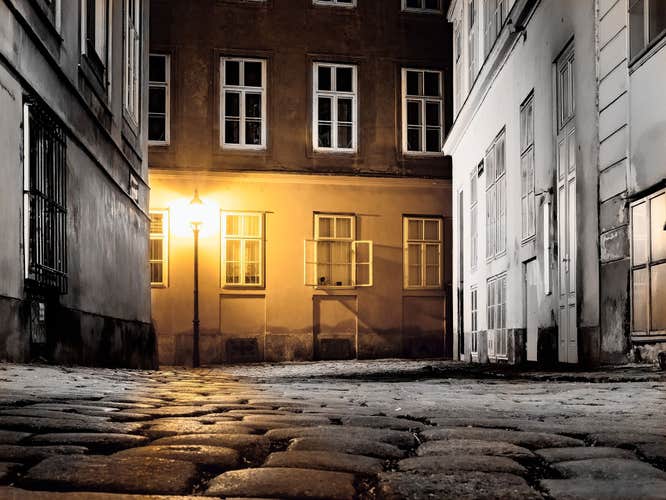
Feed your craving for extraordinary travel adventures with the top 23 unique things to do in Vienna. This guide explores the city's most extraordinary experiences, offering a fresh perspective on Vienna and unforgettable adventures at every turn.
Vienna is a place that feels like a movie set—imagine "The Grand Budapest Hotel" meets "Indiana Jones." From fiaker rides through historic streets to ghost tours in hidden alleys, the biggest selection of tours and tickets in Vienna offers plenty of unique experiences that add a magical dimension to your visit.
This guide to the top 23 unique things to do in Vienna showcases the city’s most intriguing experiences, complete with tips and fascinating facts. Each recommendation goes beyond the ordinary, uncovering hidden layers that add depth to Vienna’s charm.

Vienna effortlessly merges its regal past with offbeat modern attractions, making it a fascinating destination for travelers. Planning your visit is a breeze, with a wide array of activities and convenient transport services ensuring a seamless exploration of the city.
For those wanting to dive deeper, the largest selection of travel packages in Vienna offers an in-depth look at the city’s storied past and vibrant present. Vienna’s well-connected train system makes it easy to reach both the bustling city center and the quieter outskirts, bringing every corner of Vienna within reach.
After a day of discovery, unwind in the best hotels and places to stay in Vienna. The city’s accommodations blend modern luxury with timeless charm, creating the perfect retreat to recharge for yet another day of exploring Vienna’s unique experiences.
Popular Experiences in Vienna
Exploring Vienna is a true adventure, with a wide variety of tours to match every interest. Vienna historical tours take you deep into the city’s fascinating past, from the Imperial Crypt burial chamber to the eerie Narrenturm asylum. Meanwhile, guided day trips from Vienna whisk you to natural retreats like the Vienna Woods or secret wine cellars for offbeat experiences.
Full-day tours in Vienna can take you to nearby breathtaking destinations like Salzburg or Hallstatt, while walking tours reveal hidden gems like unusual museums or haunted streets. Each tour offers a unique way to explore Vienna's most captivating stories.
Top 23 Unique Things To Do in Vienna
Vienna offers more than the usual tourist stops. At every turn, you’ll find something unexpected—from hidden wine cellars to the world-renowned Lipizzaner stallions at the Spanish Riding School.
This list of the top 23 unique things to do in Vienna dives into the city’s unique side, spotlighting experiences that add an extra twist to your adventure. Each stop on this list promises a one-of-a-kind journey, capturing Vienna’s extraordinary character in ways you won’t soon forget.
23. Experience Heat in the Brennpunkt Museum
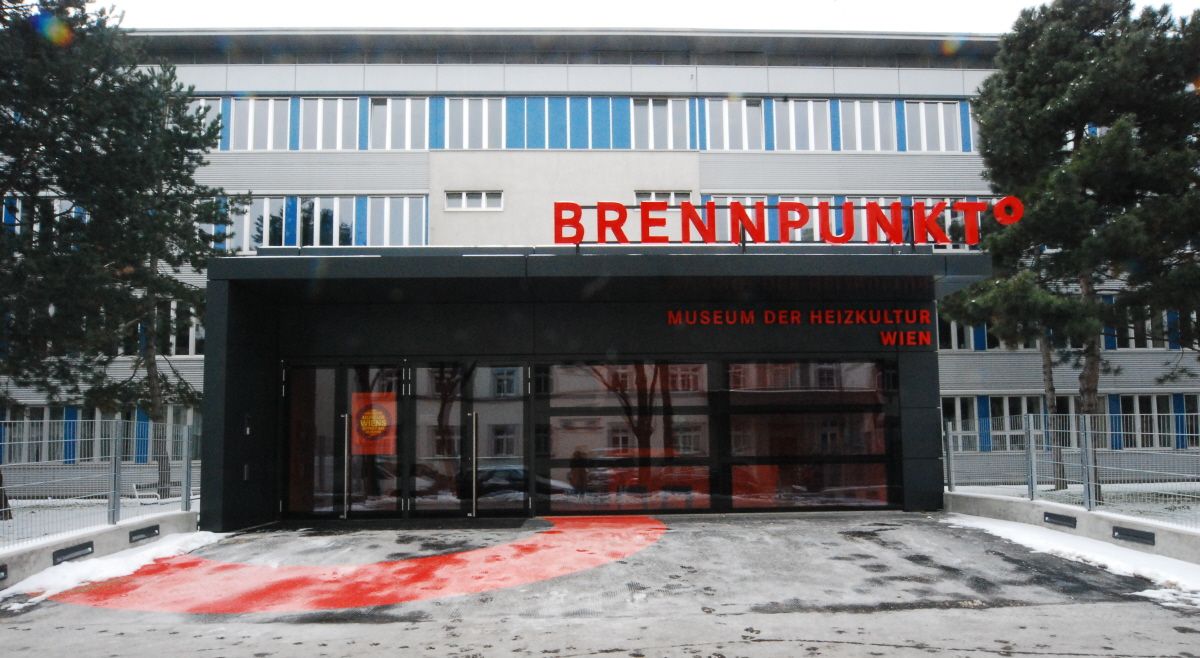
Photo of Brennpunkt – Museum der Heizkultur Wien by GuentherZ, 2010, licensed under CC BY 3.0. No edits made.
The Brennpunkt Museum, often called "the hottest museum in town," provides a fascinating dive into the history of heating technology. Its collection features rare artifacts, including vintage boilers, early refrigerators, steam heating systems, and equipment once used in schools and hospitals.
Interactive displays cover energy generation and sustainable home planning, making it a fascinating spot for science and technology enthusiasts. The museum’s offbeat focus and rare exhibits provide a fresh take on Vienna’s lesser-known scientific history.
The museum is located less than 30 minutes from Schonbrunn Palace, a staple of city breaks in Vienna. If you're looking for something unique to do on your 3-day city break in Vienna, consider adding the museum to your itinerary after a 2-course lunch and self-guided tour of Schonbrunn Palace for a richer experience.
- Address: Malfattigasse 4, 1120 Vienna.
- Opening Hours: Monday to Friday, 09:00 to 16:00 (October to May).
- Admission Fees: Regular entry fee is approximately 5 EUR.
- How To Get There: Accessible via U4 or U6 to Langenfeldgasse.
Trivia: A notable exhibit is a corrugated iron shower from a 1920s Viennese public bath. It reflects the practical design and social importance of public baths during a time when most homes lacked private bathrooms.
22. Hunt for Kielnhofer’s Guardians of Time
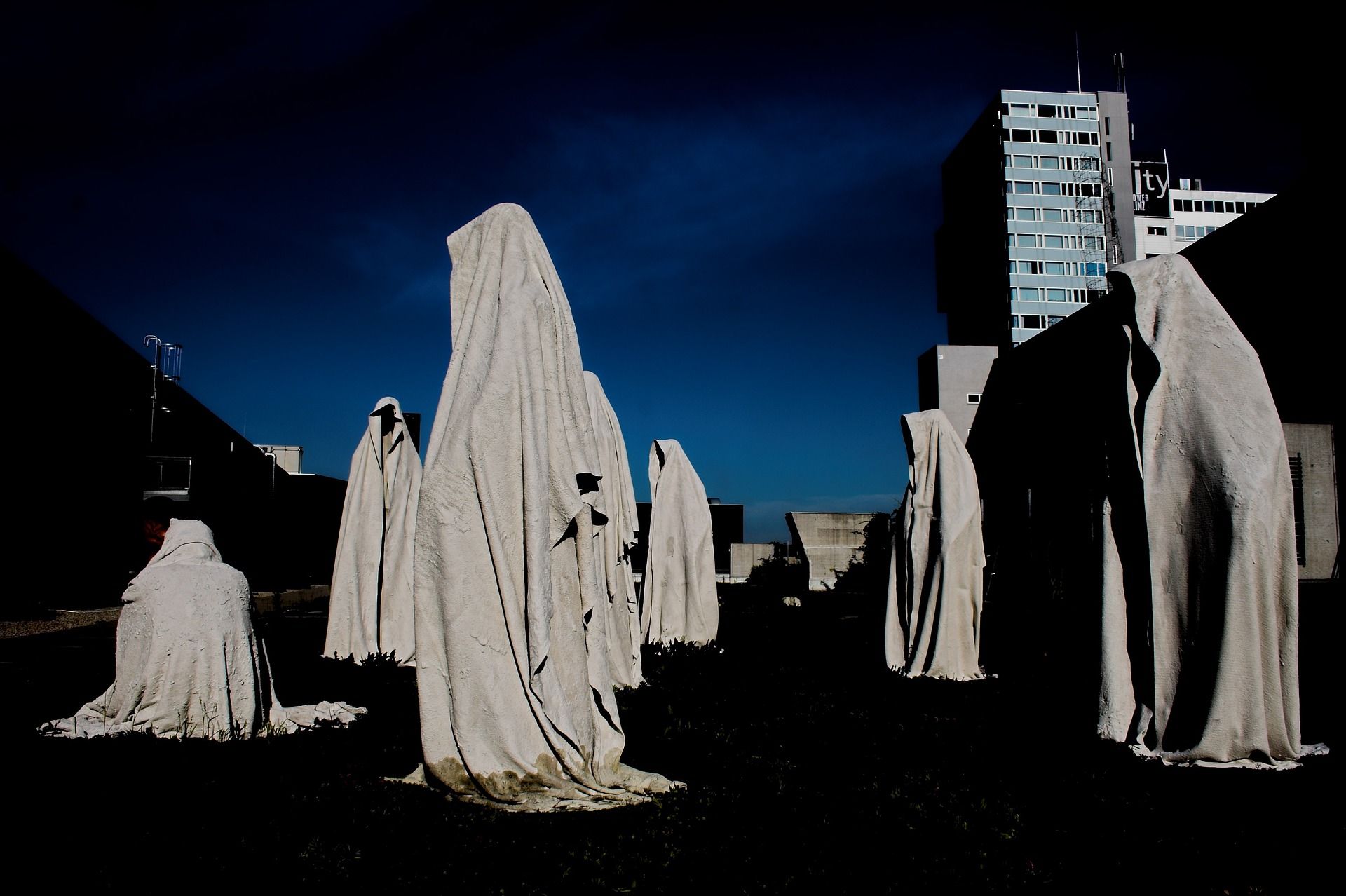
Spotting Manfred Kielnhofer's “Guardians of Time” on guided walking tours is one of the most enjoyable and unique things to do in Vienna. These life-sized figures, which resemble monks or ghosts, are part of a traveling art installation designed to highlight the unseen protectors in our history.
Placed spontaneously in public spaces, the Guardians of Time create an eerie and thought-provoking experience for passersby. While they can be spotted in Vienna, these sculptures have also appeared in other locations worldwide, including Berlin, Venice, and Basel, adding a sense of mystery and intrigue wherever they go.
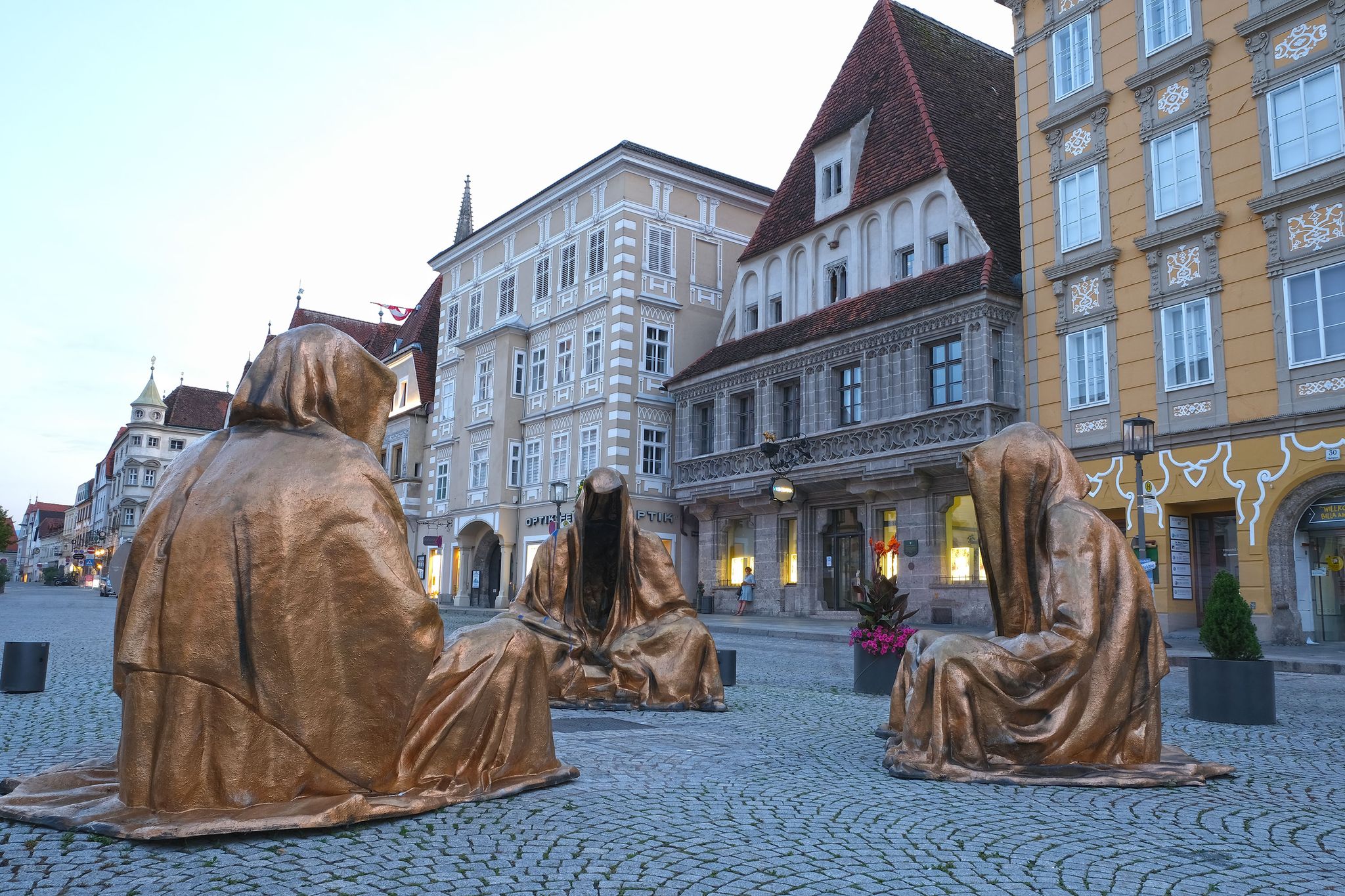
"Guardians of Time" by Manfred Kielnhofer in Steyr, Austria.
Trivia: The "Guardians of Time" are intentionally faceless to evoke mystery and timelessness. Manfred Kielnhofer believes this anonymity allows viewers to project their own interpretations onto the figures—whether as protectors, watchers, or omens—which makes them especially impactful in both historical and modern contexts.
When To Spot the Guardians of Time
Visit during Vienna’s annual art festivals, like Vienna Art Week, typically held in November across the city. Another highlight is the Festival of Lights, which traditionally takes place in late July at the Alte Donau, an old arm of the Danube River. These events frequently feature contemporary installations, and the Guardians have appeared during these times before.
When you’re in the area, consider an e-boat tour in the Old Danube for a unique perspective and a relaxing way to enjoy Vienna’s artistic and scenic charm.
21. Chase Ghosts Through Vienna’s Haunted Streets
Experience Vienna’s spooky side on a guided tour, a must for anyone intrigued by the city’s darker history. Walk by St. Stephen’s Cathedral, explore the quiet corners of Josefsplatz, and tread the paths of Blutgasse, each holding stories that add a different dimension to Vienna.
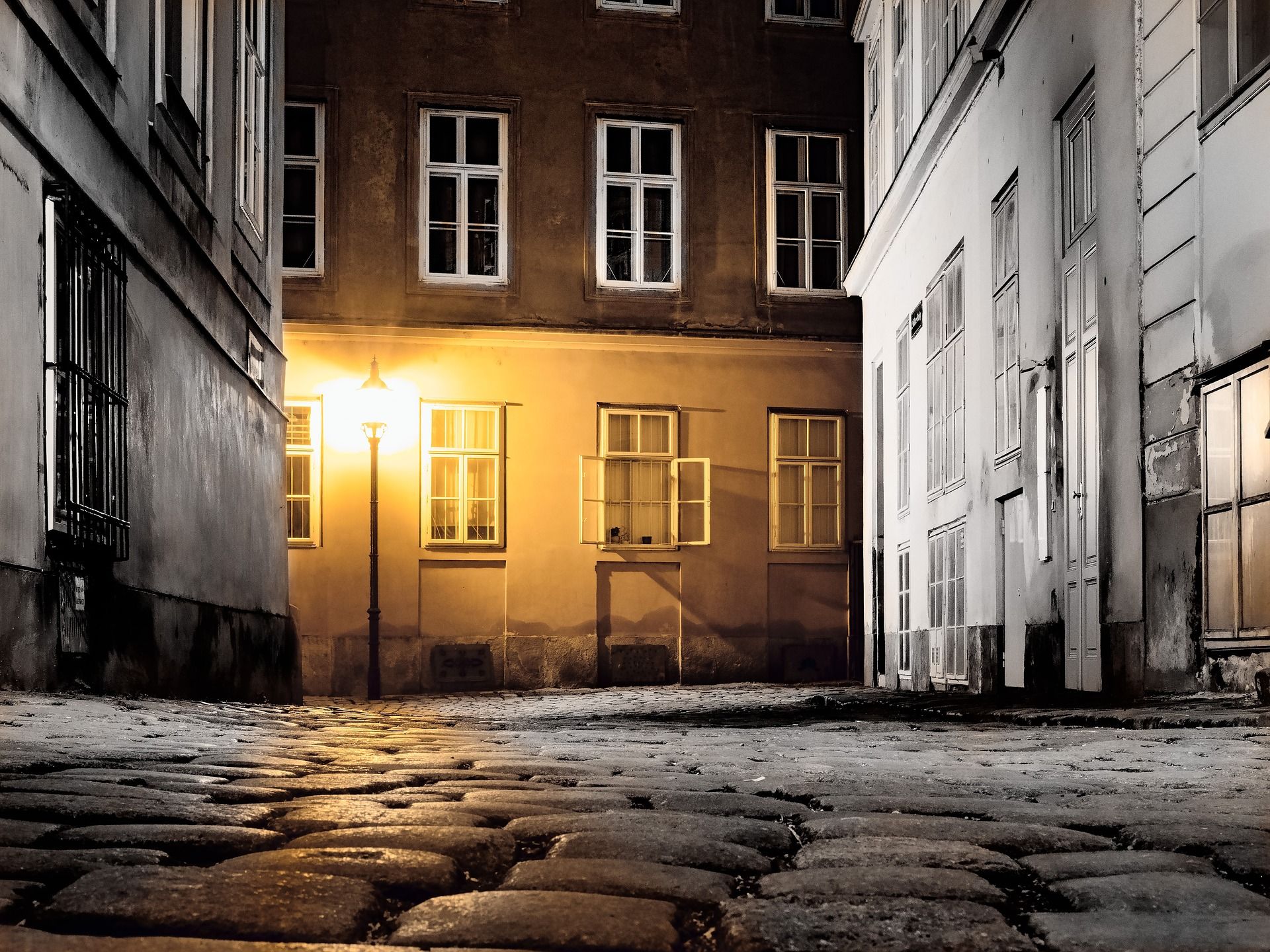
Ghost tours in Vienna reveal a side of the city that few typical sightseeing stops capture, offering an unusual way to connect with Vienna’s layered past. With tales that blend history and mystery, these tours bring you face-to-face with legends and hidden stories—an unforgettable addition to any list of thrilling things to do in Vienna.
Explore haunted places like Am Hof, an old execution ground where whispers of the past seem to linger. Discover historic buildings rumored to be haunted, with sightings of the ghostly White Lady near Hofburg Palace.
Making the Most of Vienna’s Eerie Side
The ghost tours usually lack public restroom stops, so it’s best to plan ahead. Some guides enhance the experience using candle lanterns instead of flashlights. So if you’re sensitive to low light, consider bringing your own small flashlight.
Trivia: Blutgasse, or "Blood Alley," is one of the chilling stops on most of the Vienna ghost tours. It’s said to be stained by the blood of persecuted Knights Templar from 1312, adding a haunting touch to its narrow, winding path.
20. Explore the Unspoken History at the Contraception Museum
An intriguing addition to the list of unique things to do in Vienna is a visit to the Museum of Contraception and Abortion. The museum brings to light the complex and often hidden history of reproductive health.
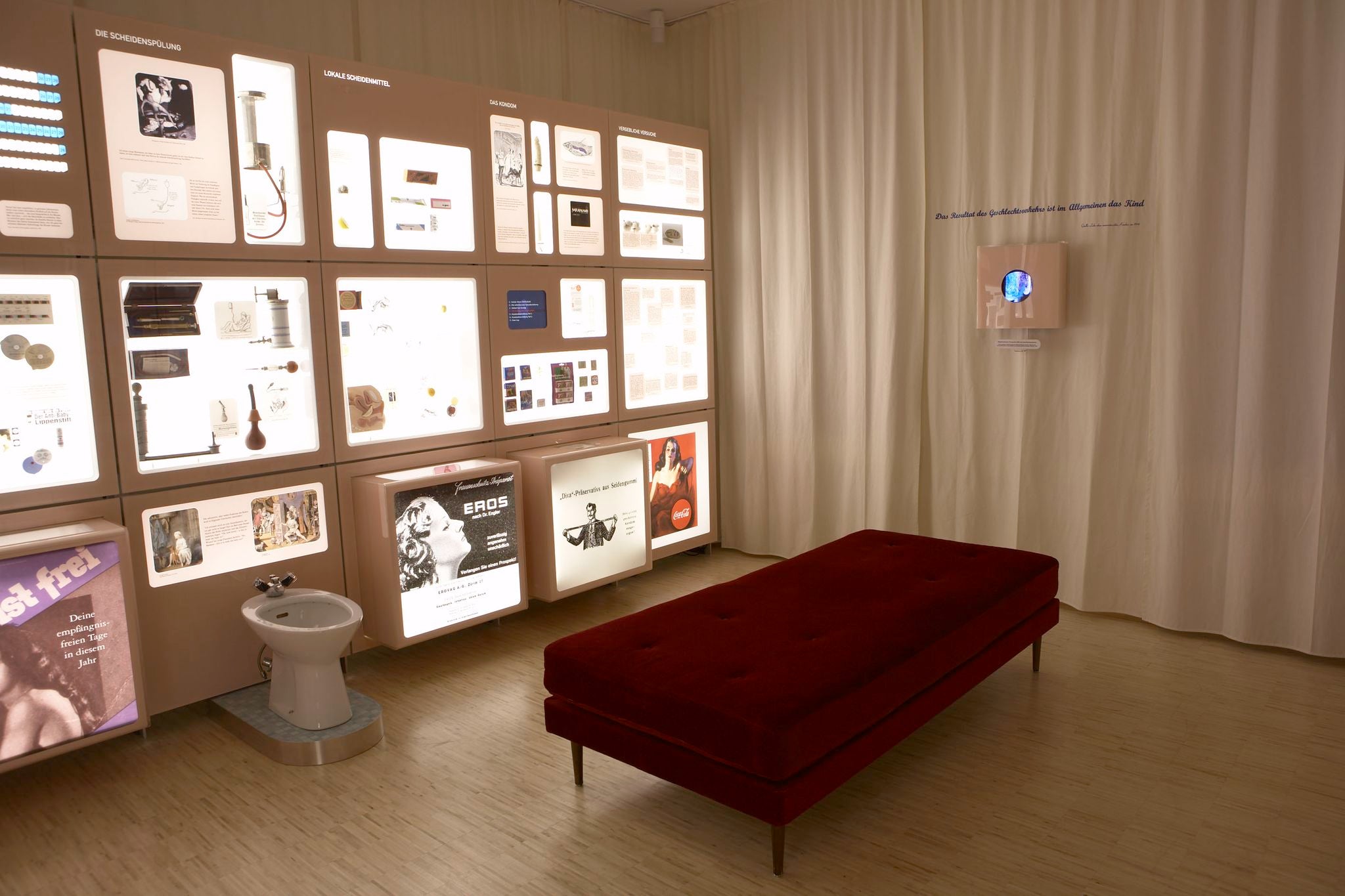
This museum reveals how, for centuries, people have relied on various—and frequently unsafe—methods to control fertility, making reproductive choices in secrecy due to stigma and lack of safe options.
The museum is divided into two main sections: contraception and abortion. In the contraception wing, you’ll find historical birth control items such as soaps, sponges, and early condoms—revealing inventive but often harmful methods once used to prevent pregnancy.
The abortion wing, by contrast, displays haunting artifacts like pins, hangers, and other tools used in desperate, unsafe attempts to end pregnancies. Together, these exhibits provide a sobering view of the past, highlighting the ongoing importance of safe and informed healthcare choices.
Trivia: One of the most bizarre exhibits is a type of 18th-century condom made from animal intestines. Visit the museum to see this unique artifact and explore the intriguing history it represents.
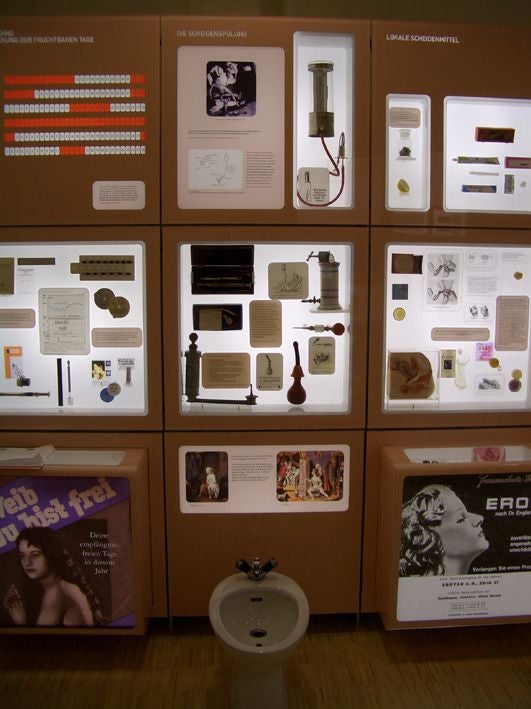
Plan Your Visit to Vienna’s Contraception Museum
Located just 2.2 kilometers (about 1.4 miles) from Schonbrunn Palace, the Contraception Museum is a fascinating addition to your 3-day weekend getaway in Vienna itinerary. Visiting the museum after a guided skip-the-line tour of Schonbrunn Palace and Gardens offers an engaging shift from imperial splendor to thought-provoking social and medical history.
- Address: Mariahilfer Gurtel 37 (distinct from Mariahilfer Strasse), 1150 Vienna.
- Opening Hours: Wednesday to Sunday, 14:00 to 18:00.
- Admission Fees: Approximately 8 EUR for visitors over 22 and around 4 EUR for those under 22.
- How To Get There: Accessible via U3 to Westbahnhof and U6 to Gumpendorfer Strasse. Or take tram lines 5, 6, 9, 18, 52, and 60 to Wien Westbahnhof.
Tip: Look for the museum’s “Insight Panels” on certain exhibits. These panels share the backstories of medical pioneers who took great risks to bring reproductive methods to light. They’re easy to miss but worth a read for hidden stories of courage.
Images by MUVS.org, used with permission under the terms of attribution:
1. Museum for Contraception and Abortion, Vienna's 15th district — Contraception room, 2008.
19. Hang Out With Marine Life at the House of the Sea
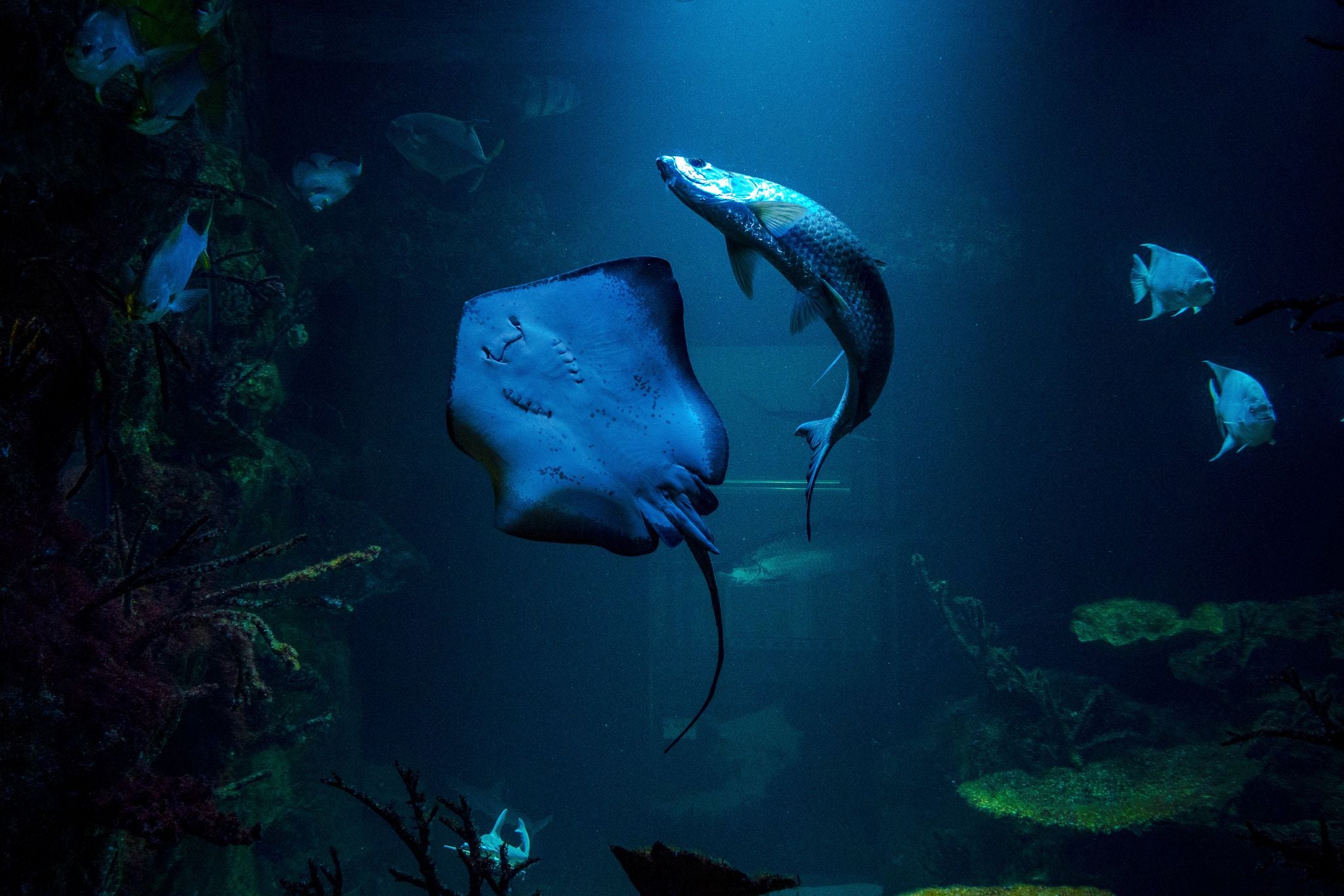
One of the top things to do in Vienna with your kids is to visit the House of the Sea or Haus des Meeres, a massive aquarium housed in a WWII flak tower. With over 10,000 marine species—including sharks, colorful tropical fish, and even free-roaming monkeys—this spot offers a unique blend of history and nature.
As you explore the tropical house, you may find monkeys popping up in unexpected places, surprising you when you least expect it. You’ll also encounter crocodiles, turtles, and exotic birds, all within this historic setting.
Getting to Haus des Meeres: A Visitor’s Guide
Take the opportunity to explore Haus des Meeres on a hop-on hop-off bus tour. It's a perfect addition to your family-friendly adventures in Vienna.
- Address: Within Esterhazy Park at Fritz-Grunbaum-Platz 1, 1060 Vienna.
- Opening Hours: Daily from 09:00 to 20:00, with the last entry at 19:30. Visiting during feeding sessions, usually held at 10:30, 14:00, and 15:30, allows you to see sharks and other marine animals up close.
- Admission Fees: Approximately 21.90 EUR for adults (ages 16 to 63), 6.50 EUR for children aged 3 to 5, and 9.80 EUR for children aged 6 to 15. Students, seniors, and visitors with disabilities enjoy a reduced rate of around 16.40 EUR.
- How To Get There: Take the U3 subway line to Neubaugasse station.
Trivia: The flak tower was originally built as an anti-aircraft defense during WWII. It now serves as a marine sanctuary, giving new life and purpose to its historical walls.
18. Step Into the World of Forgery at the Museum of Art Fakes
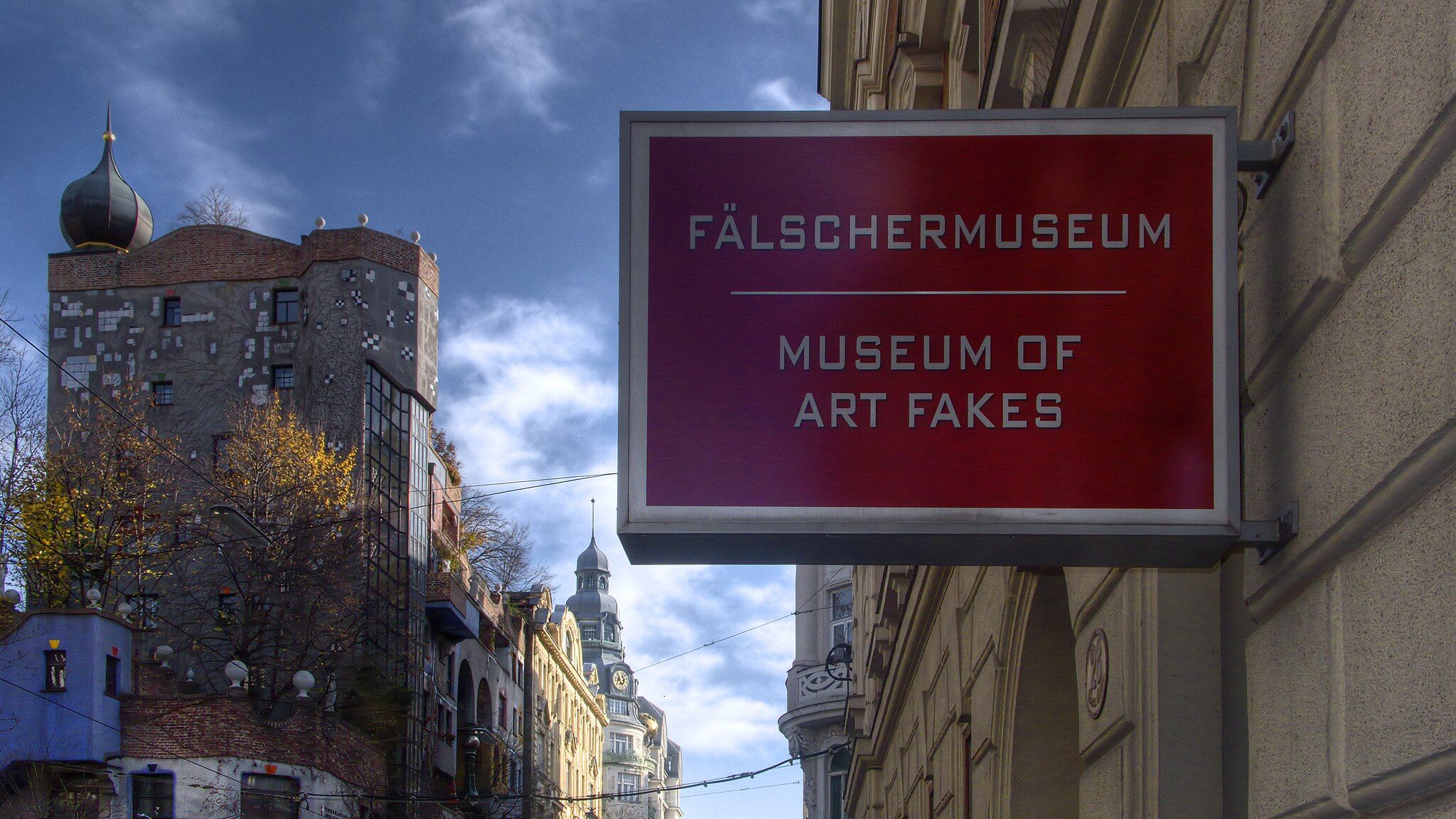
One of the unique things to do in Vienna is to visit the Museum of Art Fakes (Falschermuseum). The museum dives into the techniques and stories behind some of history’s most infamous art forgeries, offering a fascinating look at the art world’s shadowy side.
Here, you’ll find works by notorious forgers like Han van Meegeren, known for his Vermeer imitations. Other notable forgers include Tom Keating, a British restorer who claimed over 2,000 fakes, and Elmyr de Hory, whose forgeries once graced top galleries worldwide.
Some forgeries here fooled galleries and collectors for decades by replicating the precise brushstrokes, pigments, and aging techniques of artists like Rembrandt and Picasso. These convincing details tricked even experts, sparking advancements in forensic art analysis to prevent future deceptions.
Add the Museum of Art Fakes to Your Vienna Itinerary
Exploring the city's art scene deserves more than a quick visit—making a 5-day city break in Vienna the perfect amount of time to fully immerse yourself in its creative offerings. Be sure to add the Museum of Art Fakes to your itinerary, conveniently located just across from the Hundertwasserhaus.
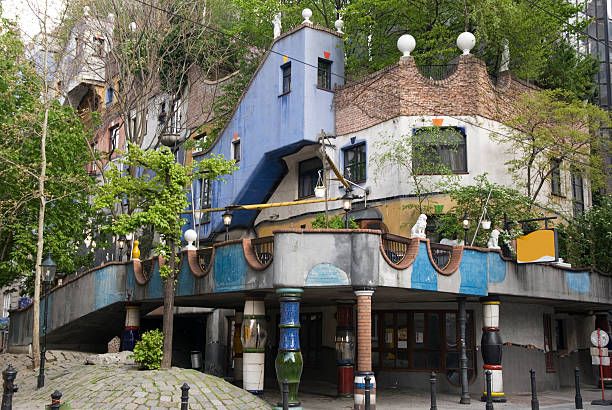
- Address: Lowengasse 28, 1030 Vienna.
- Opening Hours: Tuesday to Thursday from 10:00 to 16:00 and Friday to Sunday from 10:00 to 17:00.
- Admission Fees: About 8 EUR for adults, 6.90 EUR for pensioners, students up to 27, and 6 EUR for visitors with a disability ID. Entry is around 4 EUR for ages 12 to 18 and Kulturpass holders, while children under 12, Ukrainian citizens, and Austrian Museum Association members enter free.
- How To Get There: Take tram lines 1 and O to Radetzkyplatz. Or ride the U3 subway to Rochusgasse.
17. Walk the Line of Dark Humor at the Funeral Museum
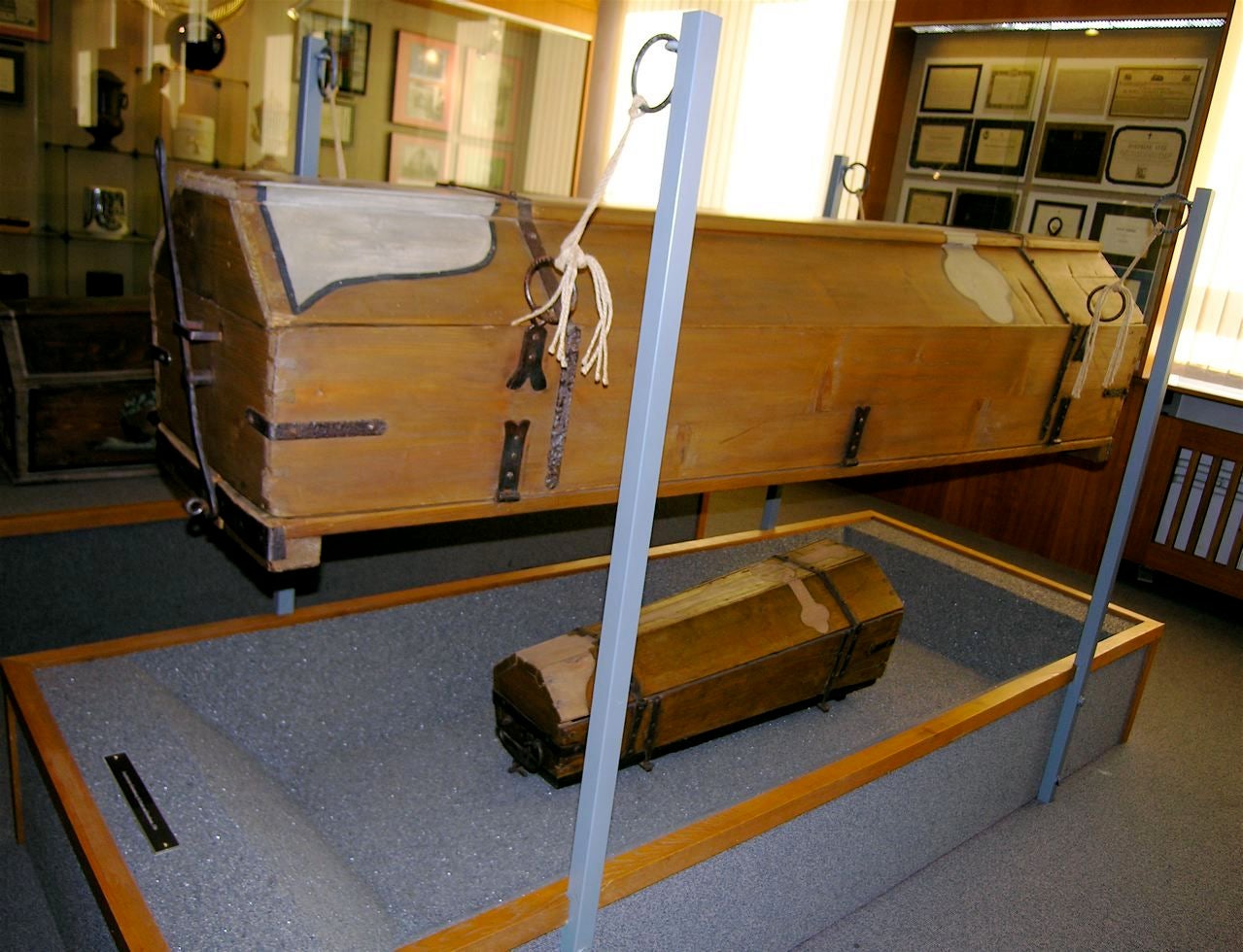
Image credit to Ekehnel, via Wikimedia Commons. No edits made.
Vienna's Funeral Museum (Bestattungsmuseum) offers a fascinating look into the city's funeral customs and traditions. With over 250 original artifacts, including historical hearses, mourning attire, and a foldaway coffin from 1784, it highlights Vienna’s unique cultural approach to death.
The museum's interactive stations delve into notable funerals, including that of Emperor Franz Joseph I. Don’t miss the “reusable” coffins, an unconventional idea championed by Emperor Joseph II, which adds to the museum’s lighthearted take on a serious topic.
Another intriguing exhibit is the “Waiting Mortuaries” (Leichenhauser), a unique 19th-century Viennese practice to ease fears of premature burial. These mortuaries featured attendants and even bells attached to the deceased to detect movement and any signs of life.
Trivia: Vienna’s elaborate funerals once included professional mourners hired to cry at funerals to enhance the event's prestige!
Extend Your Visit With Cemetery Activities
After visiting the museum, you might want to try some activities within the cemetery grounds like a gamified tour of the Vienna Central Cemetery for a more engaging experience. This interactive tour combines puzzles and fascinating stories, adding a unique twist to your visit.
- Address: Within the Central Cemetery, Simmeringer Hauptstrasse 234, Gate 2, 1110 Vienna.
- Opening Hours: Monday to Friday from 09:00 to 16:30, and Saturdays from 10:00 to 17:30 (March 1 to November 2).
- Admission Fees: Approximately 6 EUR for adults, with a reduced rate of 5 EUR for seniors, students, and visitors with disabilities. Kids and teens up to 19 enter for free.
- How To Get There: Accessible via tram lines 6 and 71 to the "Zentralfriedhof Tor 2" stop.
16. Relive the Sound of Music on a Salzburg Day Trip
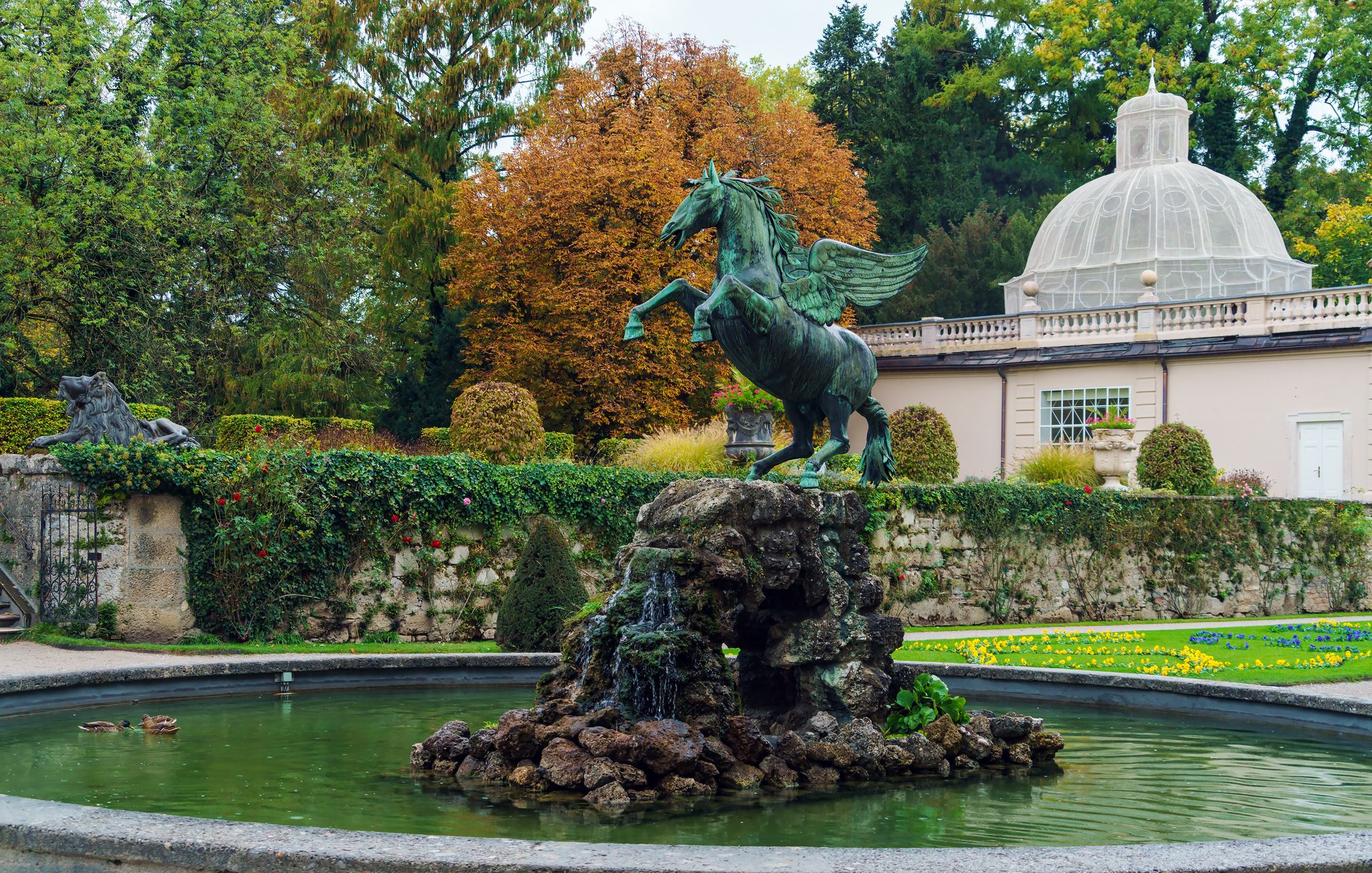
When in Vienna, fans of the Von Trapp family can easily relive scenes from "The Sound of Music" on a day trip to Salzburg.
Iconic spots like Mirabell Gardens and the adjacent Mirabell Palace, where the “Do-Re-Mi” scene was filmed, feature the Pegasus Fountain and grand staircase. Leopoldskron Palace, now operating as Schloss Leopoldskron hotel, served as the backdrop for the Von Trapp family home and can also be admired from across the lake.
Another highlight is Hellbrunn Palace, home to the famous gazebo from the "Sixteen Going on Seventeen" scene. Visitors can also explore Nonnberg Abbey, where Maria was a novice.
Trivia: Interestingly, the interior scenes of the Von Trapp house weren’t filmed at Leopoldskron Palace but were shot on a soundstage in California!
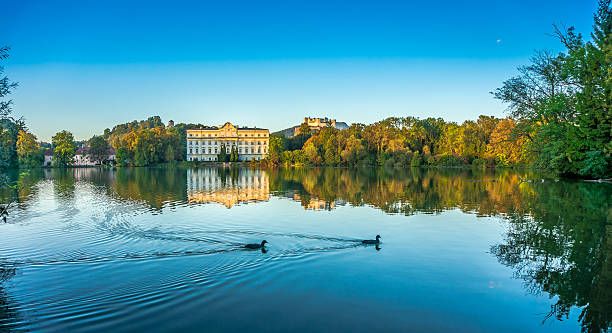
Book a stay at Schloss Leopoldskron, a true "The Sound of Music" icon, and make it one of "a few of your favorite things!"
Experience the Sound of Music Filming Locations Near Vienna
Though a bit outside Vienna, these "The Sound of Music" filming locations offer a unique experience for movie buffs eager to dive into cinematic history. To reach Salzburg from Vienna by train, take the OBB Railjet from Vienna Hauptbahnhof, with trips lasting about 2.5 hours. FlixBus also offers economical options, though the journey is longer at 3 to 4 hours.
Consider a 5-day road trip from Vienna to Salzburg for a memorable journey through Austria’s beautiful landscapes and hidden gems. By car, the drive along the A1 motorway takes around 3 hours.
Tip: To enhance your experience, visit Salzburg with the nearby Hallstatt for breathtaking scenery and historical charm.
15. Explore the Madness of Vienna's Narrenturm
The Narrenturm, or "Fool's Tower," is a round, fortress-like building that originally served as Europe’s first mental asylum. Today, it’s home to the Pathological-Anatomical Collection, a unique museum displaying an array of medical curiosities.
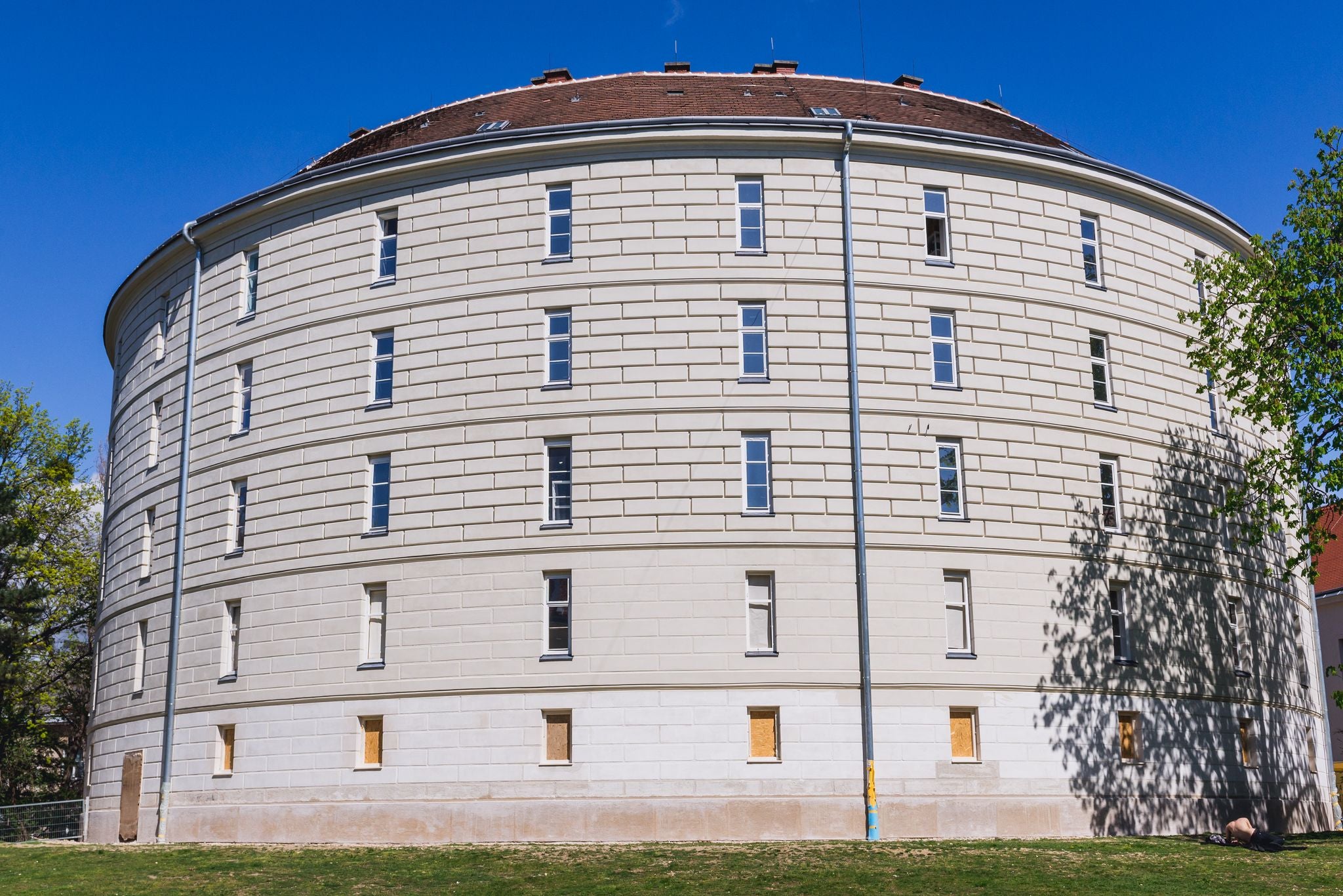
Trivia: The tower's circular design was to prevent escapes. There are claims that each room had chains to restrain dangerous patients.
Inside, visitors can explore preserved specimens of rare diseases, wax models of skin conditions, and historical medical tools. Highlights include syphilitic skulls, jars containing unusual specimens, and detailed wax displays illustrating the effects of untreated illnesses. This extensive collection offers a rare and intriguing look into the history of medicine and medical science.
Practical Details for Visiting the Narrenturm
It's a fascinating stop among the places you can visit with a Vienna Sightseeing Flexi Pass. This pass is perfect for a 5-day weekend getaway in Vienna for a convenient and cost-effective way to explore the city’s top attractions at your own pace.
- Address: Within the Vienna University Campus at Spitalgasse 2, 1090 Vienna.
- Opening Hours: Wednesday (10:00–18:00), Thursday and Friday (10:00–15:00), and Saturday (12:00–18:00).
- Admission Fees: Around 8 EUR for adults, 6 EUR for reduced tickets, and free for those under 19.
- How To Get There: Reach the location via the U6 line to Alser Strasse, or tram lines 5 (to Lazarettgasse) and 43 (to Lange Gasse).
Tip: The Narrenturm has multiple floors with narrow staircases, so comfortable shoes are a must. Due to its historic architecture, accessibility and seating are limited. The stone structure keeps it cool inside, so bring an extra layer to stay comfortable.
14. Seek Out Vienna’s Secret Wine Cellars
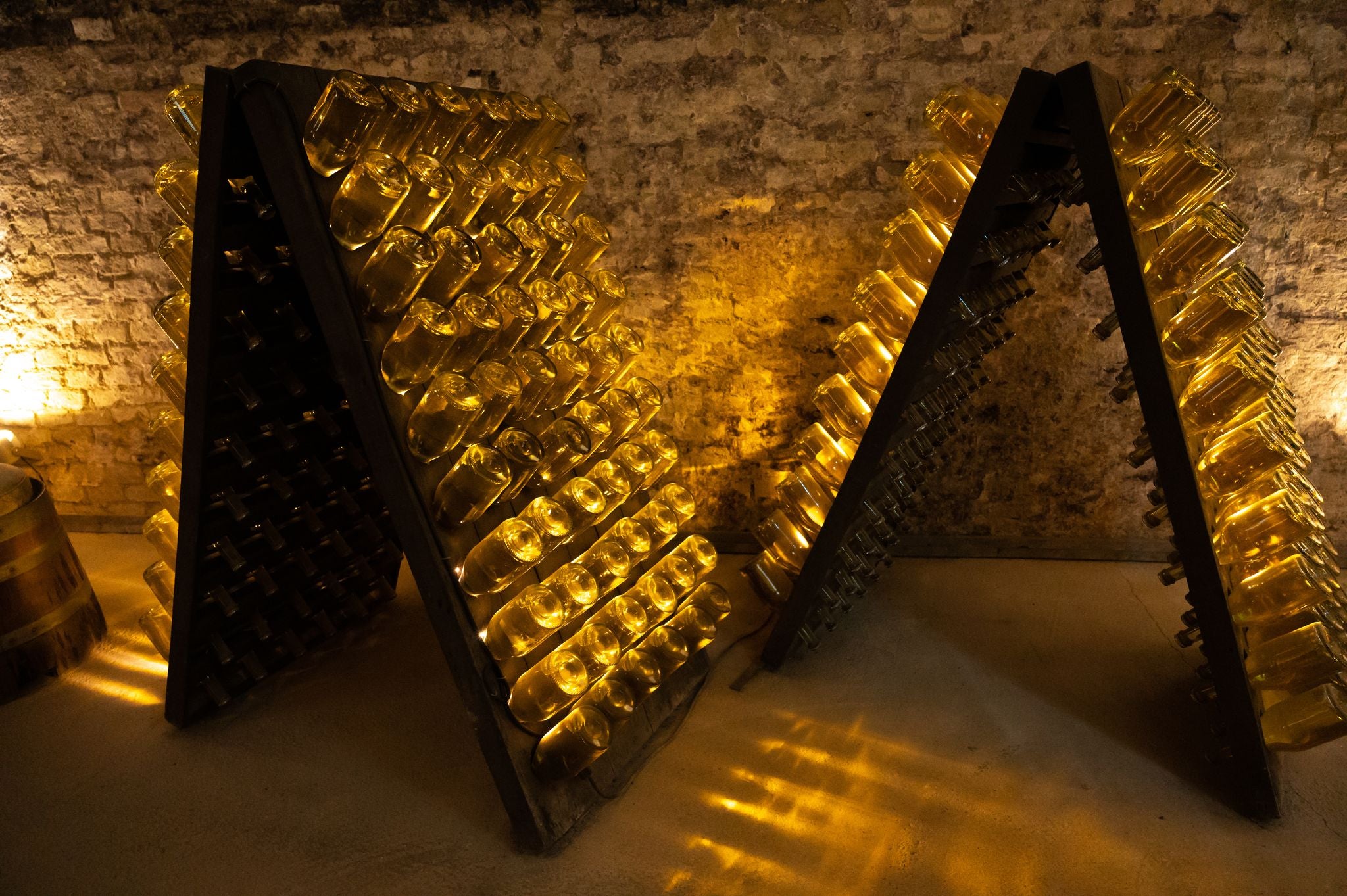
While in Vienna, why not treat yourself to a glass of wine in the city's deepest cellar, where history meets flavor? Whether you’re a wine lover or not, exploring these hidden spaces is one of the must-try things to do in Vienna.
Beneath the city's streets lies a maze of historic wine cellars, some dating back to the Middle Ages, perfect for sampling Vienna's local wines in a truly unique setting.
Notable stops include the Palais Coburg, home to a wine archive with around 60,000 bottles. Another is the Schlumberger Cellars, Austria’s oldest sparkling wine producer, with winding passages that stretch for kilometers underground.
Discover Hidden Wine Cellars in Vienna’s Historic First District
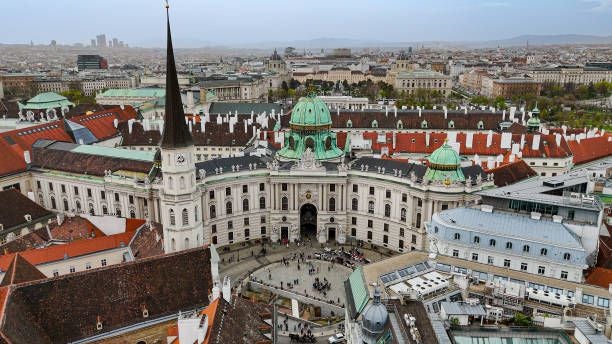
Many top wine cellars are hidden in plain sight in Vienna’s First District. Look for discreet signs or entrances near historic buildings—some are tucked beneath restaurants and cafes. Keep an eye out for plaques marked “Weinkeller” (wine cellar) or “Weinhandlung” (wine shop), or symbols like grape clusters or wine glasses.
Trivia: Most of these wine cellars date back to the 18th century. Some were reportedly used as secret meeting places during times of political chaos.
13. Encounter Vienna’s Mummies at St. Michael’s Crypt
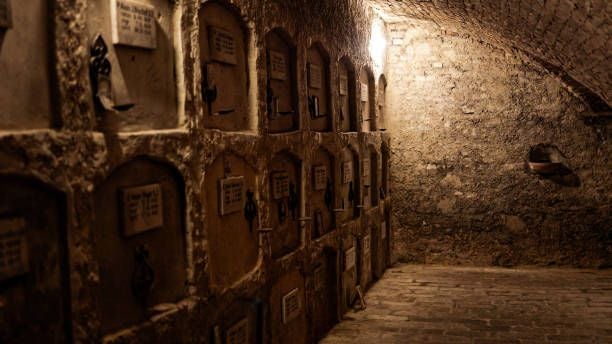
Underneath St. Michael’s Church lies one of Vienna’s most fascinating and haunting hidden gems: a crypt where natural conditions have preserved human remains for centuries.
Thanks to the unique air and soil, around 4,000 bodies—nobles, middle-class citizens, even children—have been naturally mummified here since the 1600s, with some eerie details still intact.
As you walk through these dimly lit corridors, you’ll encounter faces, clothing, and even strands of hair frozen in time. For those looking for truly unique stuff to do in Vienna, this crypt provides a rare, unfiltered window into another era’s customs and views on mortality.
Trivia: One of the crypt’s most remarkable mummies is the "Sleeping Beauty"—a young woman from the 18th century, exceptionally well-preserved with a serene expression and delicate features. Despite her exceptional preservation, her identity remains unknown.
Explore St. Michael’s Crypt: History Beneath Vienna’s Streets
St. Michael’s Crypt is conveniently located near St. Stephen’s Cathedral and Hofburg Palace, both you can visit on a 4-day Vienna weekend getaway. This timeframe allows you to dedicate one or two days to Vienna’s historic center, where everything is within walking distance.
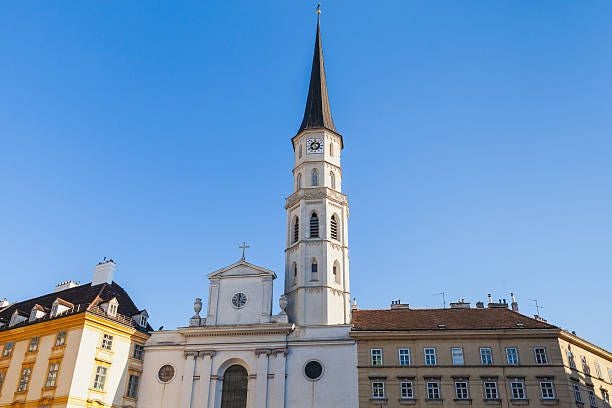
Image credit to Gryffindor, via Wikimedia Commons. No edits made.
- Address: Beneath St. Michael’s Church at Michaelerplatz 5, 1010 Vienna.
- Opening Hours: Public guided tours, conducted in German, are available every Friday at 12:00 and 14:00, and Saturdays at 10:00 and 12:00.
- Admission Fees: Public tours are approximately 8 EUR for adults and 4 EUR for children. Private tours, offered in English by appointment, have a minimum charge of around 48 EUR for up to six people, with 8 EUR per additional person.
- How To Get There: Accessible by the U3 (orange line) and U1 (red line) subway lines to Stephansplatz station, or the U3 line to Herrengasse station. You can also ride tram lines 1, 2, and D.
Tip: The crypt has low ceilings and narrow passageways, so if you’re a bit claustrophobic, take your time navigating the space. It's a fascinating but tight space, so be mindful of your surroundings.
12. Walk Among Legends at Vienna’s Central Cemetery
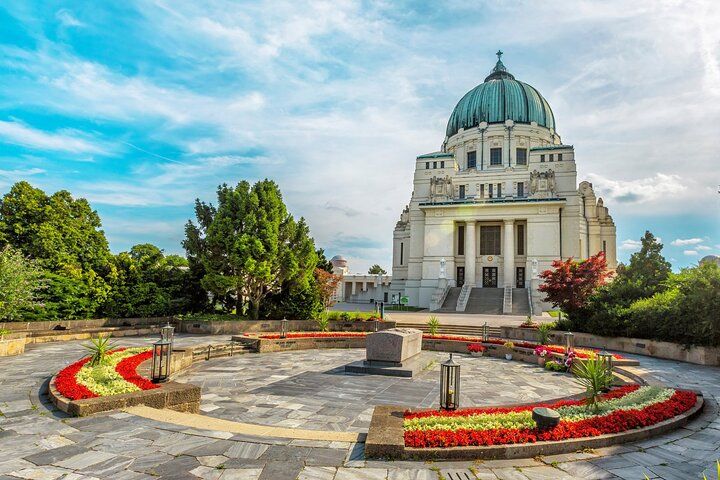
The Central Cemetery (Zentralfriedhof) in Vienna is more than just a burial ground—it’s a reflection of the city’s cultural heritage.
Established in 1874, it spans over 2.5 square kilometers, making it one of Europe’s largest cemeteries. Here, visitors can pay respects to iconic composers like Beethoven, Schubert, Brahms, and Strauss, each honored with commemorative monuments.
Within the cemetery, you’ll find the beautiful Art Nouveau-style Dr. Karl Lueger Memorial Church, originally named St. Charles Borromeo. Its grand dome, stained-glass windows, and intricate mosaics make it a striking landmark.
Explore Vienna's “City of the Dead”
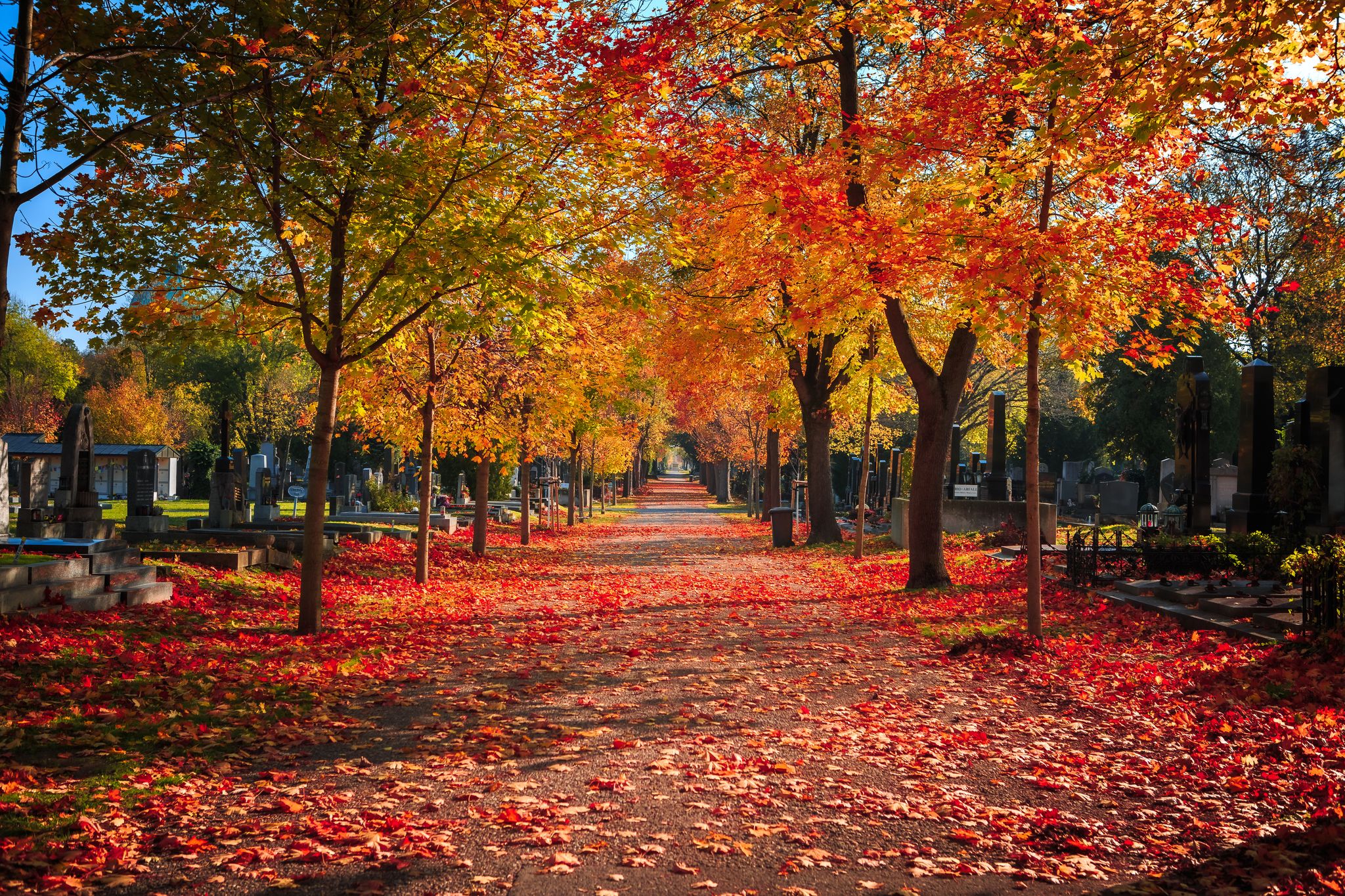
Trivia: With over 3 million burials, the Vienna Central Cemetery is known as the “City of the Dead”—it houses more deceased than Vienna has living residents!
Walk through Vienna’s Central Cemetery with a professional guide to uncover the history behind its beautiful memorial church, iconic monuments, and notable residents. This is one of the top things to do in Vienna for history lovers.
- Address: Simmeringer Hauptstrasse 234, 1110 Vienna.
- Opening Hours: Daily from 07:00 to 18:00. The Dr. Karl Lueger Memorial Church is open from 08:00 to 17:00.
- Admission Fees: Free, though services like guided tours and audio guides may have a fee.
- How To Get There: Accessible via U3 to Simmering and tram lines 11 or 71 to Simmering.
Tip: To explore this vast cemetery, visitors can also rent bicycles at the main entrance (Gate 2) or use the internal tram line.
11. Uncover the Secrets Beneath St. Stephen’s Cathedral

Image credit to Stadler/Bwag, via Wikimedia Commons. No edits made.
Beneath St. Stephen's Cathedral, a highlight of the best travel packages to Vienna, lies a 14th-century labyrinth of catacombs. It's the resting place for over 11,000 people, including plague victims and notable figures.
Central to this network is the Ducal Crypt (Herzogsgruft), where Duke Rudolf IV, “the Founder,” is interred. Renowned for initiating the Gothic reconstruction of the cathedral in 1359, his legacy is deeply intertwined with the cathedral’s history.
Trivia: The catacombs don’t just hold bones; they also contain urns with the hearts and organs of Habsburg royalty, following the tradition of burying different body parts in separate locations. This custom, rooted in the Middle Ages, was intended to honor multiple places significant to the deceased or their family.
Tour the Catacombs of St. Stephen’s Cathedral
Wander through the catacombs on a private tour and explore the narrow passages lined with meticulously arranged skeletal remains. You’ll see burial styles ranging from simple wooden coffins to stone tombs. This hidden world beneath St. Stephen’s Cathedral adds a touch of mystery to your list of top things to do in Vienna.
- Address: Stephansplatz 3, 1010 Vienna.
- Opening Hours: Guided tours run Monday to Saturday from 10:00 to 11:30 and 13:30 to 16:30, and Sundays and public holidays from 13:30 to 16:30, departing every 30 minutes.
- Admission Fees: About 7 EUR for adults and 2.50 EUR for children (ages 6 to 14).
- How To Get There: Accessible via the U1 and U3 subway lines and tram lines 1, 2, and 71.
Tip: While in the catacombs, notice the unique acoustics. The stone walls amplify sounds, adding an eerie authenticity to the experience.
10. Compose Your Own Symphony at the House of Music
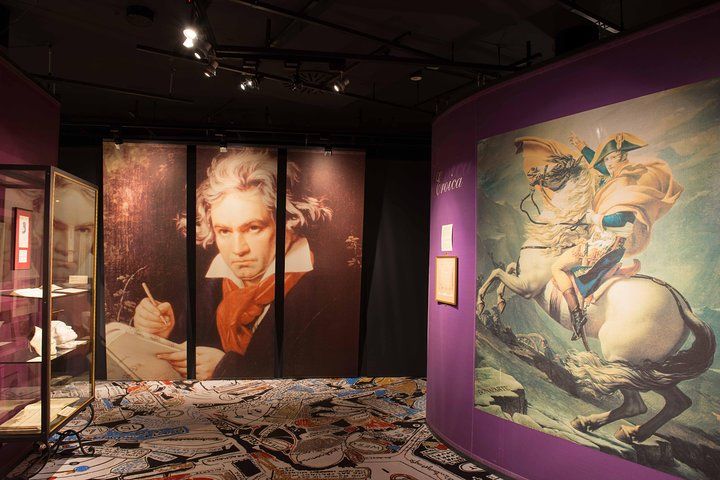
The House of Music is an exciting, hands-on museum spread over four floors, each dedicated to a different part of sound and music. Here, you can explore Vienna’s musical legacy in a unique way—by stepping into the role of a composer.
Get skip-the-line access to the House of Music and dive into this interactive journey through sound and creativity. In this immersive museum, you can conduct a virtual orchestra, compose your own waltz, and experiment with sound waves and acoustics through interactive displays.
A highlight of the House of Music is the Vienna Philharmonic Museum, where rare instruments, original scores, and recordings from the orchestra’s 180-year history are on display. The museum also brings Vienna’s famous composers to life, featuring stories and exhibits about Mozart, Beethoven, and Strauss.
Trivia: The virtual orchestra can "boo" you if you fail to keep time, offering a playful twist on the conducting experience.
Explore the House of Music in Vienna
With its interactive exhibits and audio guides, the House of Music makes learning about sound and music engaging and memorable. It’s a highlight among music tours in Vienna, perfect for enthusiasts and visitors alike.
- Address: Seilerstatte 30, 1010 Vienna.
- Opening Hours: Daily from 10:00 to 22:00, with the last admission at 21:00.
- Admission Fees: Around 14 EUR for adults and 6 EUR for children aged 3 to 11.
- How To Get There: Accessible via U1, U2, and U4 to Karlsplatz, or U1 and U3 to Stephansplatz. You can also take lines 1, 2, D, and 71 to Oper/Karlsplatz.
9. Escape to Nature in the Vienna Woods
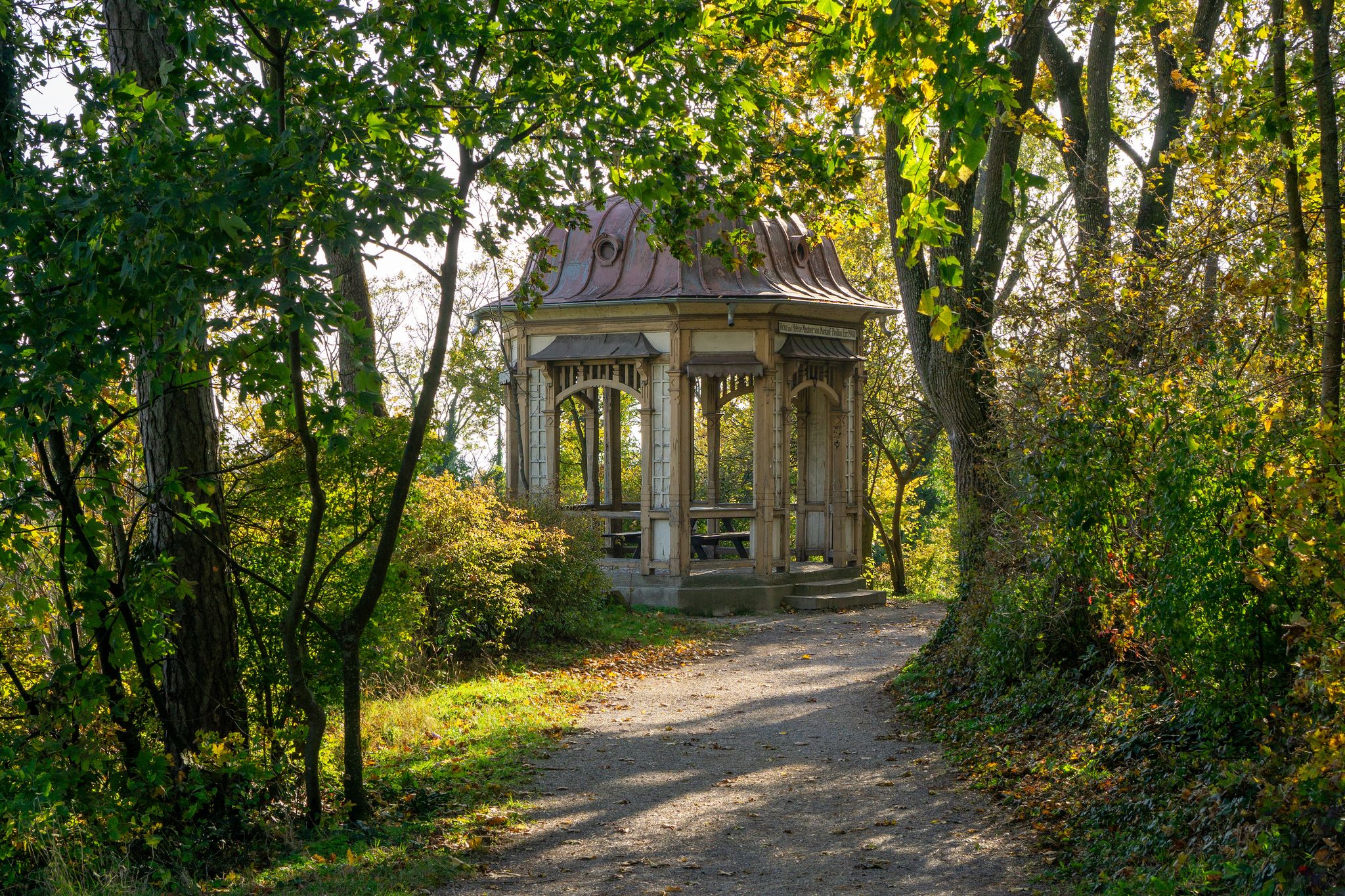
The Vienna Woods (Wienerwald) is a beautiful forested area just west of the city, stretching into Lower Austria and parts of Styria. As a UNESCO Biosphere Reserve, it combines natural beauty with historical and cultural significance.
For those seeking a tranquil retreat, spending time in the Vienna Woods is one of the most relaxing things to do in Vienna. Visitors can enjoy hiking trails like Stadtwanderweg 2, leading to Kahlenberg Hill, which offers panoramic views of Vienna.
The Hidden Gems of the Vienna Woods
Take a four-wheeled drive on a Vienna Woods hot rod tour, cruising along curvy scenic roads. Along the way, uncover hidden gems like the Hermitage of Mayerling and Seegrotte Hinterbruhl, Europe’s largest underground lake.
Located in the Vienna Woods, Hermannskogel is Vienna’s highest point, which offers breathtaking views over the city. It’s an ideal spot for a picnic, pack some local treats and enjoy a relaxing afternoon surrounded by the lush, peaceful landscape of the Wienerwald.
- Opening Hours: Open year-round.
- Admission Fees: General entry to the Woods is free, though specific attractions within the region, such as Heiligenkreuz Abbey, Lainzer Tiergarten, and the Kahlenberg Tower, may charge entrance fees.
- How To Get There: Accessible via bus lines 38A, 55A, and 56B to popular areas like Kahlenberg, Leopoldsberg, and Lainzer Tiergarten, or the S-Bahn line S50 to Purkersdorf. Traveling by car is also a convenient option.

Trivia: Beethoven often retreated to the Vienna Woods to find inspiration for his music. He composed many works while surrounded by nature.
8. Travel the World at Vienna’s Globe Museum
The Globe Museum, part of the Austrian National Library, is a hidden gem in Vienna. It features over 250 globes—terrestrial, celestial, lunar, and planetary—showing how humanity’s view of the world and cosmos since the 16th century.
Highlights include hand-painted globes, rare astronomical tools, and a 1536 terrestrial globe by Gemma Frisius, the oldest in the collection. The museum also houses a unique 18th-century "reversible" globe by Johann Gabriel Doppelmayr. It features a terrestrial globe on one side and a celestial globe on the other—a clever design that reflects the era’s focus on both geography and astronomy.
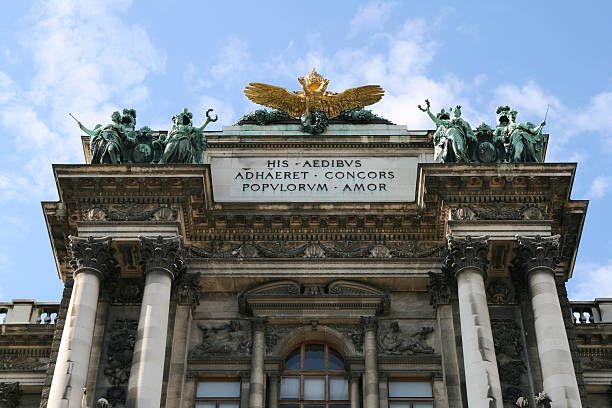
Good To Know: Tips for Visiting Vienna’s Globe Museum
The Globe Museum is part of the Austrian National Library, which is located within the Hofburg Palace complex in Vienna. With the 4-day city break in Vienna package, you can explore the palace and conveniently add the adjacent Globe Museum to your itinerary.
- Address: Within the Austrian National Library at Herrengasse 9, 1010 Vienna.
- Opening Hours: Monday to Friday from 09:00 to 18:00, and Saturday from 09:00 to 14:00.
- Admission Fees: Approximately 7 EUR for adults, with discounts for students, seniors, and groups, and free entry for visitors under 19.
- How To Get There: Accessible via U3 to Herrengasse.
Good To Know: While photography is allowed, avoid using flash to protect the delicate globes.
7. Flutter Through the Magical Butterfly House

The Schmetterlinghaus, or Butterfly House, is a tropical oasis hidden in Vienna’s Burggarten. This Art Nouveau greenhouse is home to hundreds of exotic butterflies, creating a rainforest-like escape in the city.
Inside, you'll find lush plants like orchids and tall palms, along with waterfalls and small ponds that add to the serene ambiance. Stroll through the Butterfly House’s vibrant environment and experience one of the most enchanting things to do in Vienna.
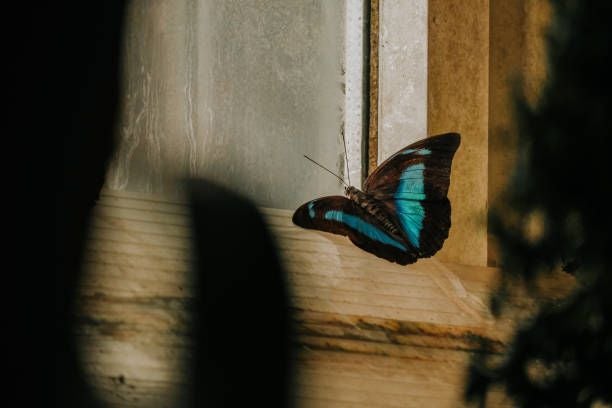
Trivia: The Butterfly House is home to the Blue Morpho butterfly, known for its brilliant blue wings and large size. With wingspans up to 20 centimeters, it’s one of the world’s largest butterflies.
Top Tips for Visiting Vienna’s Butterfly House
Get your Butterfly House Vienna tickets for the early morning slot when the butterflies are most active. Check out the feeding stations where butterflies gather around fresh fruit—a perfect spot for close-up photos.
- Address: Burggarten/Palmenhaus, 1010 Vienna.
- Opening Hours: Daily from 09:00 to 18:00, with seasonal variations.
- Admission Fees: About 12 EUR for adults, with discounts for children, students, and seniors.
- How To Get There: Accessible via the U1 to Stephansplatz, U2 to Museumsquartier, and U3 to Herrengasse. You can also take tram lines 1, 2, D, and 71 to Burgring.
6. Unveil the Secrets of Vienna’s Imperial Crypt
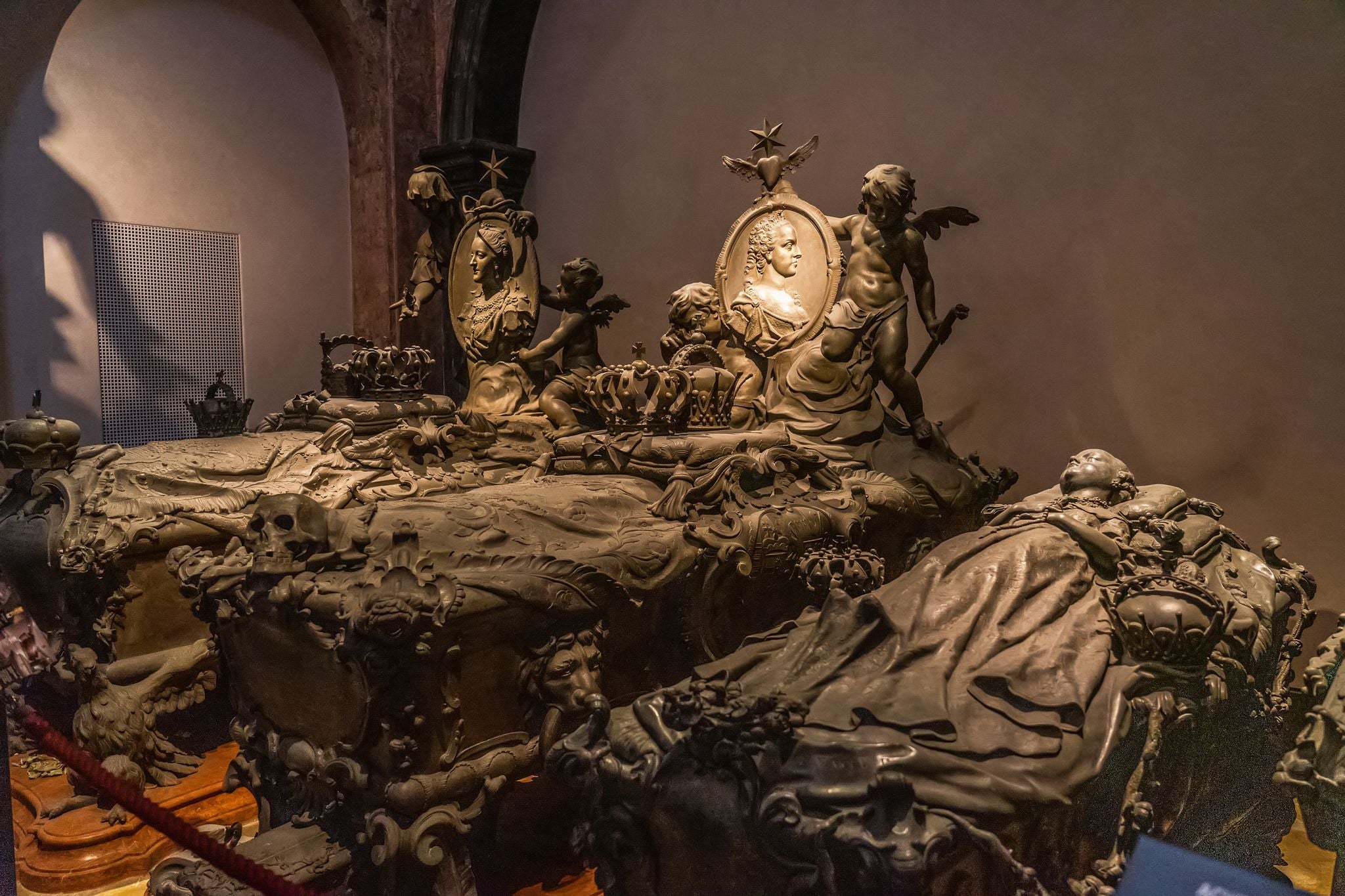
Exploring the Imperial Crypt (Kapuzinergruft), located beneath Vienna's Capuchin Church, is one of the unique things to do in Vienna. This serene, haunting space reveals layers of Austria’s history and art, with chambers showcasing Baroque to Rococo styles that reflect centuries of Habsburg taste.
As the main burial site since 1633, the crypt holds the remains of over 150 Habsburgs, including 12 emperors and 19 empresses and queens. Notable figures include Empress Maria Theresa and Emperor Franz I, whose elaborate double sarcophagus is a highlight, as well as Emperor Franz Joseph I, Empress Elisabeth (Sisi), and Crown Prince Rudolf.
Trivia: Empress Elisabeth (Sisi) is buried here, but due to the Habsburg "separate burial" tradition, her heart and intestines lie elsewhere—her heart in the Herzgruft at the Augustinian Church and her intestines in the Ducal Crypt at St. Stephen's Cathedral. A walking tour of Vienna’s imperial highlights reveals the full Habsburg story.
Events & Access to the Imperial Crypt via Capuchin Church
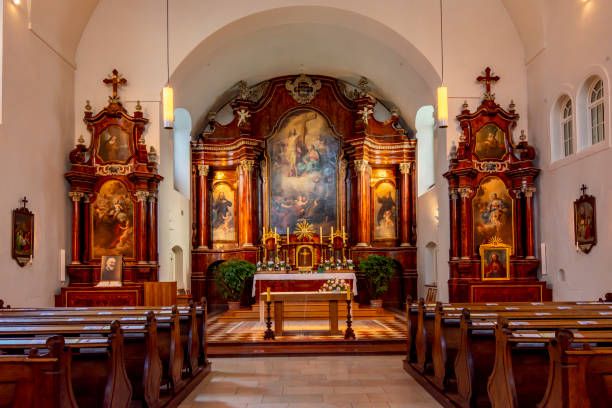
Given that access to the Imperial Crypt is through the Capuchin Church, it's advisable to check the church's event schedule when planning your visit, as concerts and services may affect entry times.
The Capuchin Church hosts classical music concerts throughout the year, including the popular "A Little Night Music" series, featuring compositions by Mozart, Haydn, and Schubert. During the holiday season, you can attend a Christmas concert at the church. It's a memorable way to add a touch of magic to your 6-day city break in Vienna.
- Address: Beneath the Capuchin Church at Tegetthoffstrasse 2, 1010 Vienna.
- Opening Hours: Tuesday to Sunday from 10:00 to 17:00 (last entry at 16:30).
- Admission Fees: Around 7 EUR for adults, 5 EUR for seniors and students, and free for children under 19.
- How To Get There: Accessible via the U1 and U3 lines to Stephansplatz and tram lines 1, 2, 62, 71, and D.
Tip: The crypt layout is organized by time period and family line. Follow the signage or map for a chronological tour.
5. Step Into the Past at the Time Travel Vienna Museum

Time Travel Vienna is an immersive attraction in central Vienna offering a 50-minute guided tour through the city’s history with 5D cinema, animatronics, and special effects. Visitors journey from the Roman era to WWII through themed rooms and interactive exhibits.
Highlights include lifelike figures of Habsburg rulers like Emperor Maximilian I and Empress Maria Theresa, a WWII air-raid simulation, and a virtual horse-drawn carriage ride through Vienna.
Experience the Time Travel Museum in Vienna
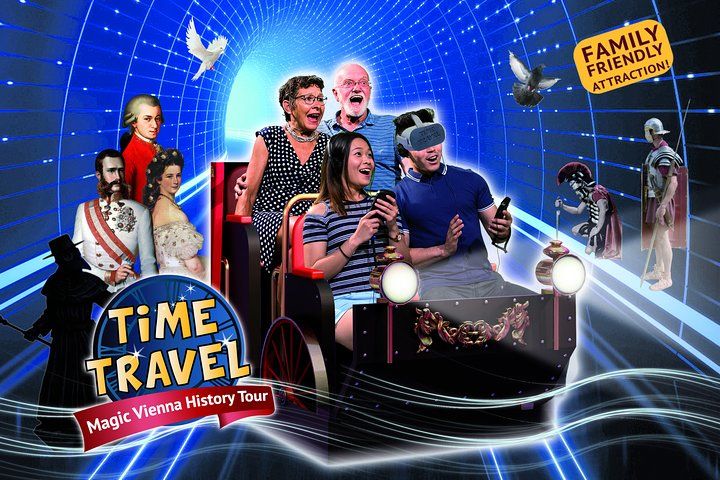
Visiting the museum is an engaging addition to your list of things to do in Vienna with your kids. Secure your tickets to the Time Travel Museum in advance and enjoy sensory experiences that blend education and entertainment into one.
Tip: Make sure to sit in the middle rows during the 5D experience for the best view of the action-packed show.
- Address: Habsburgergasse 10a, 1010 Vienna, Austria.
- Opening Hours: Daily from 10:00 to 20:00 (last admission at 19:00).
- Admission Fees: Approximately 21 EUR for adults, 17 EUR for children (ages 5 to 14), 19 EUR for seniors (60+), and students with ID, while children under 5 enter free.
- How To Get There: Accessible by U3 to Herrengasse, U1 and U3 to Stephansplatz, and tram lines 1A and 2A.
4. Clip-Clop Through Vienna’s Past on a Fiaker
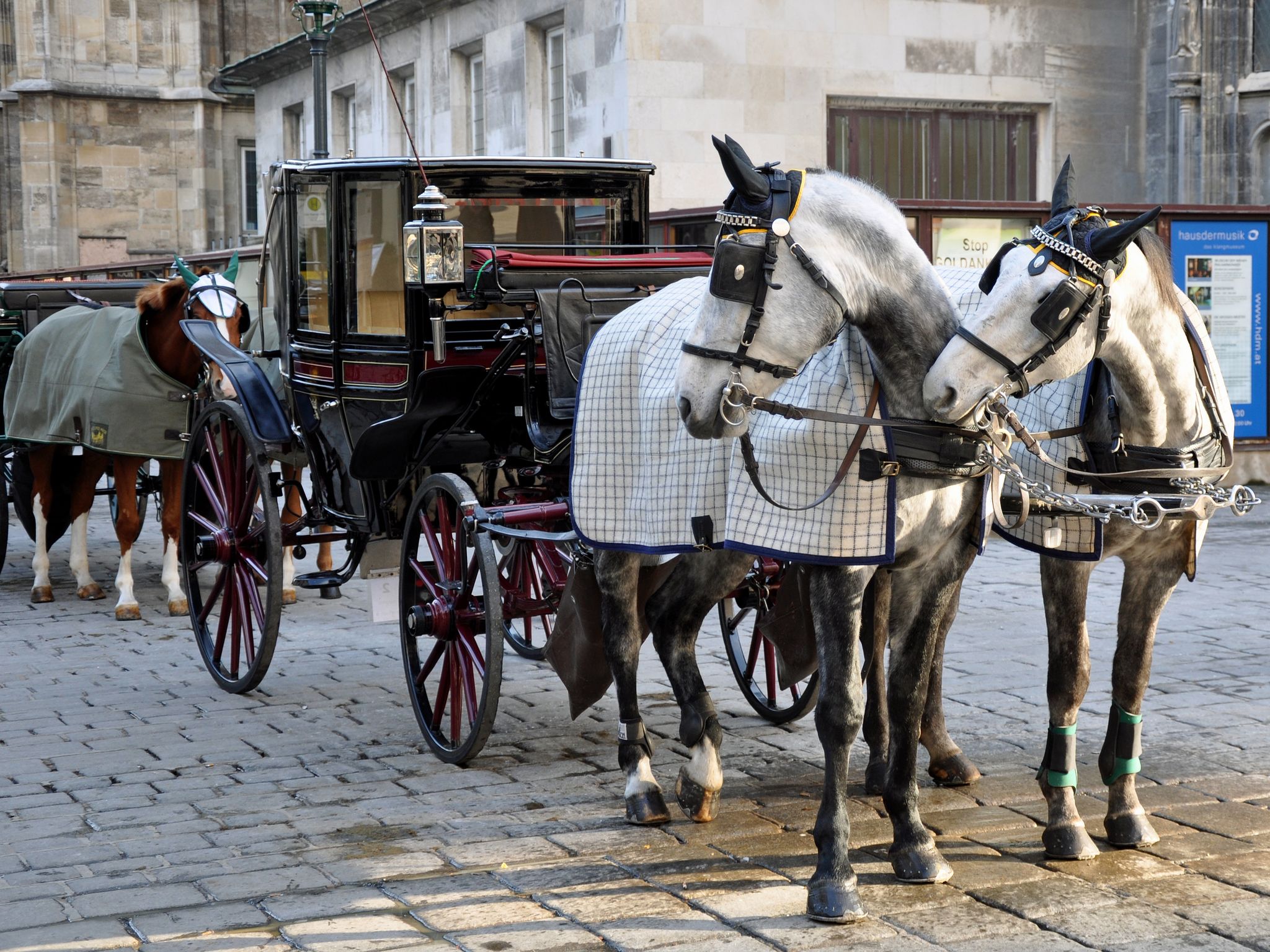
To experience Vienna from a fiaker—a traditional horse-drawn carriage—is a timeless way to soak up the city's history and charm and one of the most memorable things to do in Vienna. These carriages have been part of Viennese culture since the 17th century, offering leisurely rides past historic streets and iconic landmarks.
Trivia: The term "fiaker" originated in Paris from the Rue de Saint-Fiacre, where the first carriage stand opened in 1662. Vienna adopted this name around 1720, replacing “Janschky coaches,” named after entrepreneur Joseph Janschky. By the 19th century, fiakers were a city staple, with over 1,000 carriages. Today, they’re a beloved symbol of Vienna’s rich history and tradition.
Fiaker Rides in Vienna: Routes, Prices, and Helpful Tips
Some fiaker drivers have themed or decorated carriages, so check at the stand for these unique options. Most drivers are happy to let you take photos or short videos, as long as it doesn’t disturb the horses or the ride.
- Address: Prominent locations like Stephansplatz, Michaelerplatz, and Albertinaplatz.
- Hours: Rides typically last 20 to 60 minutes.
- Fees: Around 60 EUR for a 20-minute ride, 100 EUR for 40 minutes, and 120 EUR to 140 EUR for an hour.
3. Admire the Whimsical Exterior of the Hundertwasser House
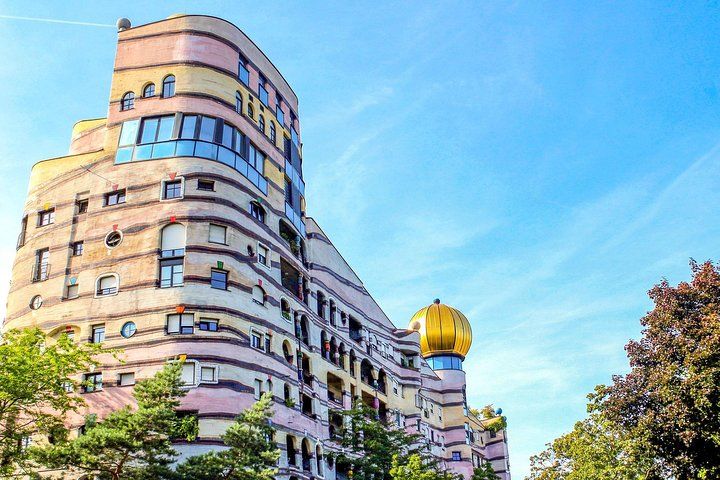
The Hundertwasser House in Vienna’s third district is a colorful icon of modern art and architecture. Designed by artist Friedensreich Hundertwasser and completed in 1985, this eye-catching residential building features wavy floors, irregular windows, and a kaleidoscopic facade.
The building's whimsical design provides a captivating backdrop for Instagram photos, capturing the essence of Vienna's artistic diversity. It's a favorite highlight among architecture tours in Vienna.
Trivia: Hundertwasser famously avoided straight lines, calling them “godless” because he felt they didn’t harmonize with nature. He preferred organic curves and irregular shapes, seeing them as more in tune with the natural world, where straight lines rarely appear.
Hundertwasser House: What To See and How To Get There
While Hundertwasser House is not open to the public, you can still admire its exterior and explore the nearby Hundertwasser Village. The village, designed in Hundertwasser’s style, has a cafe, shops, and an exhibition space that offer more insight into his artistic vision. For the best photos, go early in the morning to avoid the crowds.
- Address: Kegelgasse 36-38, 1030 Vienna.
- How To Get There: Take the U3 line to Landstrasse (Wien Mitte) or tram line 1 to Hetzgasse.
2. Witness the Beauty of Horses at the Spanish Riding School
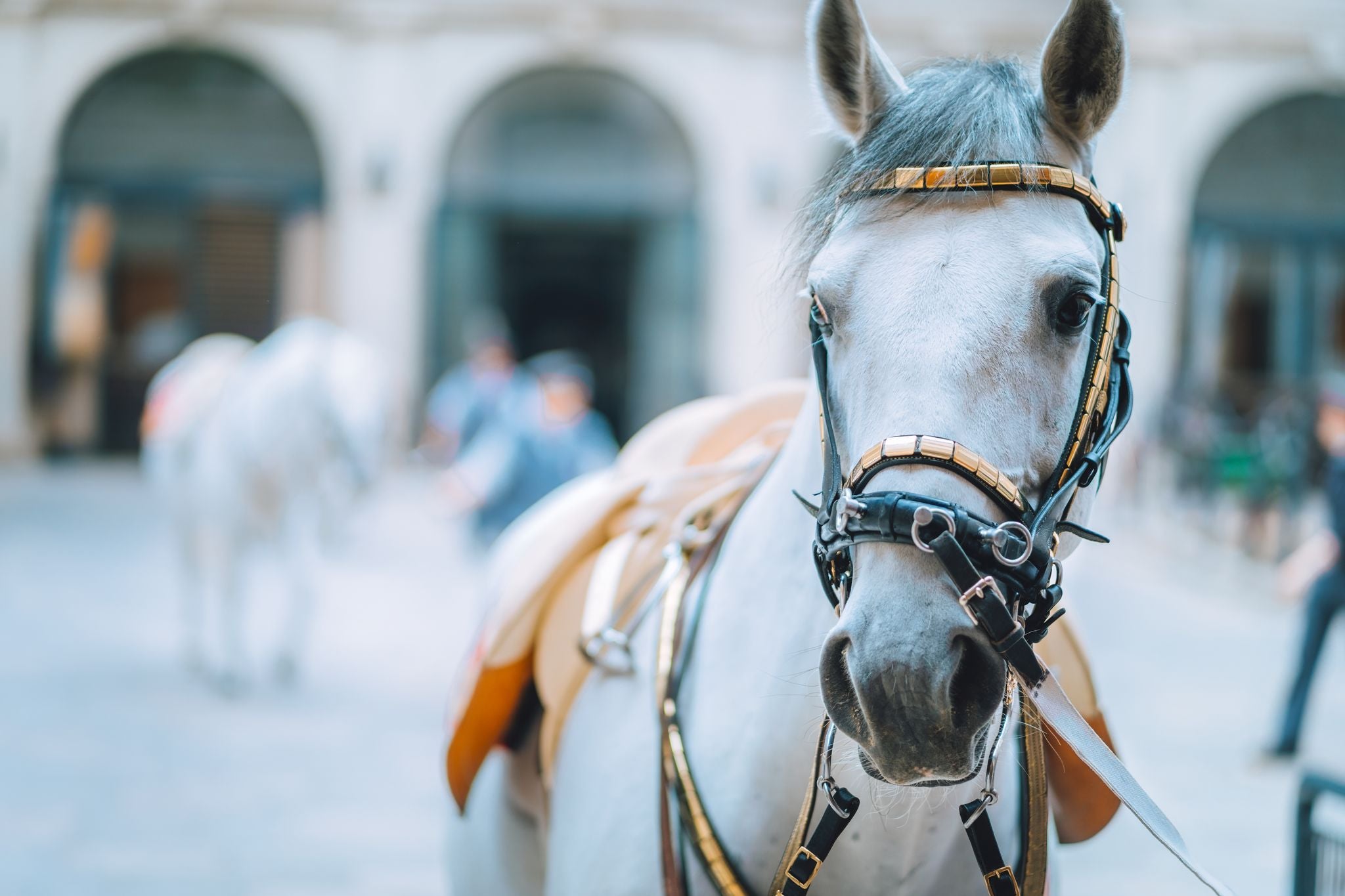
The Spanish Riding School in Vienna is world-renowned for its Lipizzaner stallions and its dedication to classical dressage, a graceful style of horseback riding that resembles “horse ballet.” With over 450 years of tradition, attending a performance here lets visitors see the deep connection between rider and horse.
Set in the elegant baroque Winter Riding School, built in the 1700s, these performances bring grandeur to this Vienna experience. The Spanish Riding School is the only place in the world preserving this Renaissance art in its original form.
Trivia: Lipizzaner horses are born dark—typically black, brown, or gray—and gradually turn white by age 6 to 10. This natural color change adds to their elegance and mystique.
Spanish Riding School in Vienna: Tips for the Best Experience
Watching these beautiful horses perform is one of the most unique things to do in Vienna. Visit the Spanish Riding School on a historical tour of Vienna and experience this majestic equestrian tradition.
- Address: Michaelerplatz 1, 1010 Vienna.
- Opening Hours: Daily from 09:00 to 16:00. Morning exercises are typically held from 10:00 to 12:00 on Tuesdays to Fridays. Performances and guided tours are scheduled at various times throughout the week.
- Admission Fees: About 15 EUR for adults and 10 EUR for children. Performance tickets start at approximately 25 EUR, with morning exercises available for around 17 EUR for adults and about 9 EUR for children.
- How To Get There: Accessible by U3 to Herrengasse and U1 to Stephansplatz, or by tram lines 1, 2, D, and 71 to Burgring or Oper/Karlsplatz.
Tip: The Royal Box or the Gallery seats offer the best views, particularly for seeing high movements like the "airs above the ground.” If you visit in late spring and early summer, you might catch a glimpse of Lipizzaner foals, offering a look at these young stars in training.
1. Discover the Wonders of Schonbrunn Palace
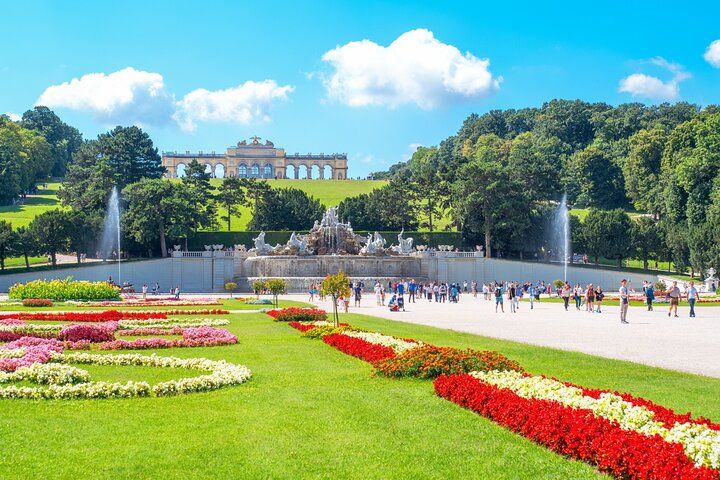
Schonbrunn Palace is Vienna’s top attraction, celebrated for its vast size, historical importance as a former imperial residence, and the variety of experiences it offers. Visiting on a skip-the-line guided Schonbrunn Palace and Gardens tour lets you explore the grand halls, wander through the beautifully landscaped gardens, and step into the luxurious world of the Habsburgs.
Among the palace’s highlights, the Imperial Carriage Museum offers a fascinating glimpse into Habsburg ceremonial life. This museum showcases over 60 historical state coaches, sleds, and sedan chairs, including the magnificent Golden Coronation Coach.
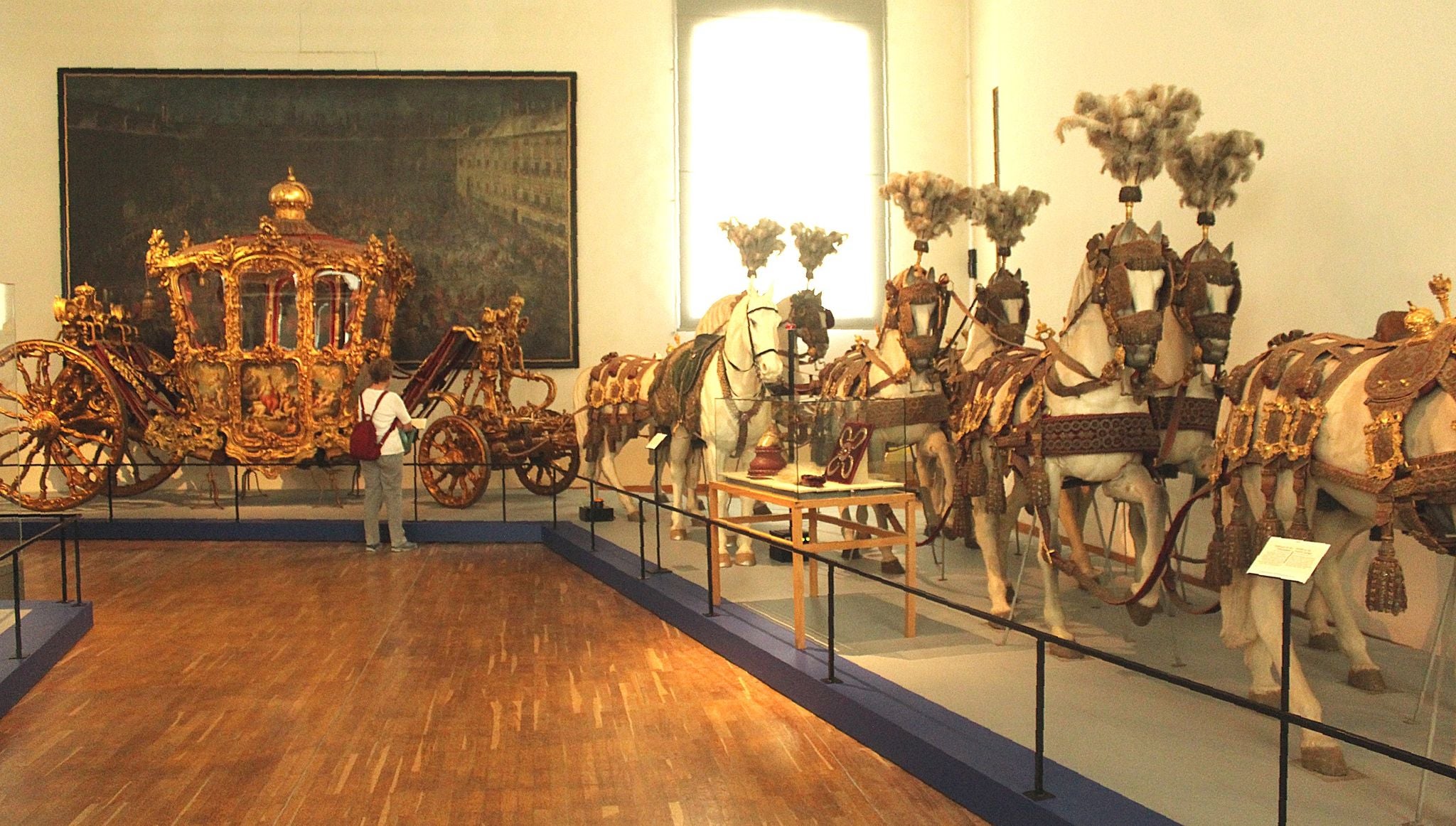
Image credit to Dguendel, via Wikimedia Commons. No edits made.
Trivia: The Golden Coronation Coach measures approximately 23 feet (7 meters) in length and 12 feet (3.6 meters) in height, and it weighs around 4.4 tons (4 metric tons). Due to its weight, eight horses are needed to pull it!
Schonbrunn’s Imperial Carriage Museum: A Must-See in Vienna
Explore the Imperial Carriage Museum with skip-the-line access and marvel at its extravagant golden carriages on display. It’s one of the most memorable things to do in Vienna, and well worth making time for.
- Address: Schonbrunner Schlossstrasse 47, 1130 Vienna.
- Opening Hours: Daily from 09:00 to 17:00 between March 15 and November 30, and from 10:00 to 16:00 between December 1 and March 14.
- Admission Fees: Around 12 EUR for adults, 9 EUR for seniors over 65 and students up to 25, and free for children and teenagers under 19. An audio guide is available for about 2 EUR.
- How To Get There: Take the U4 to Schonbrunn or use tram lines 10 and 60 to Schloss Schonbrunn.
Tip: Look for the “Black Parade” Carriage, the funeral coach used for royal processions—jet black and decorated with silver accents. It offers a glimpse into the elaborate customs surrounding royal funerals.
Make Standout Memories With Unique Things To Do in Vienna
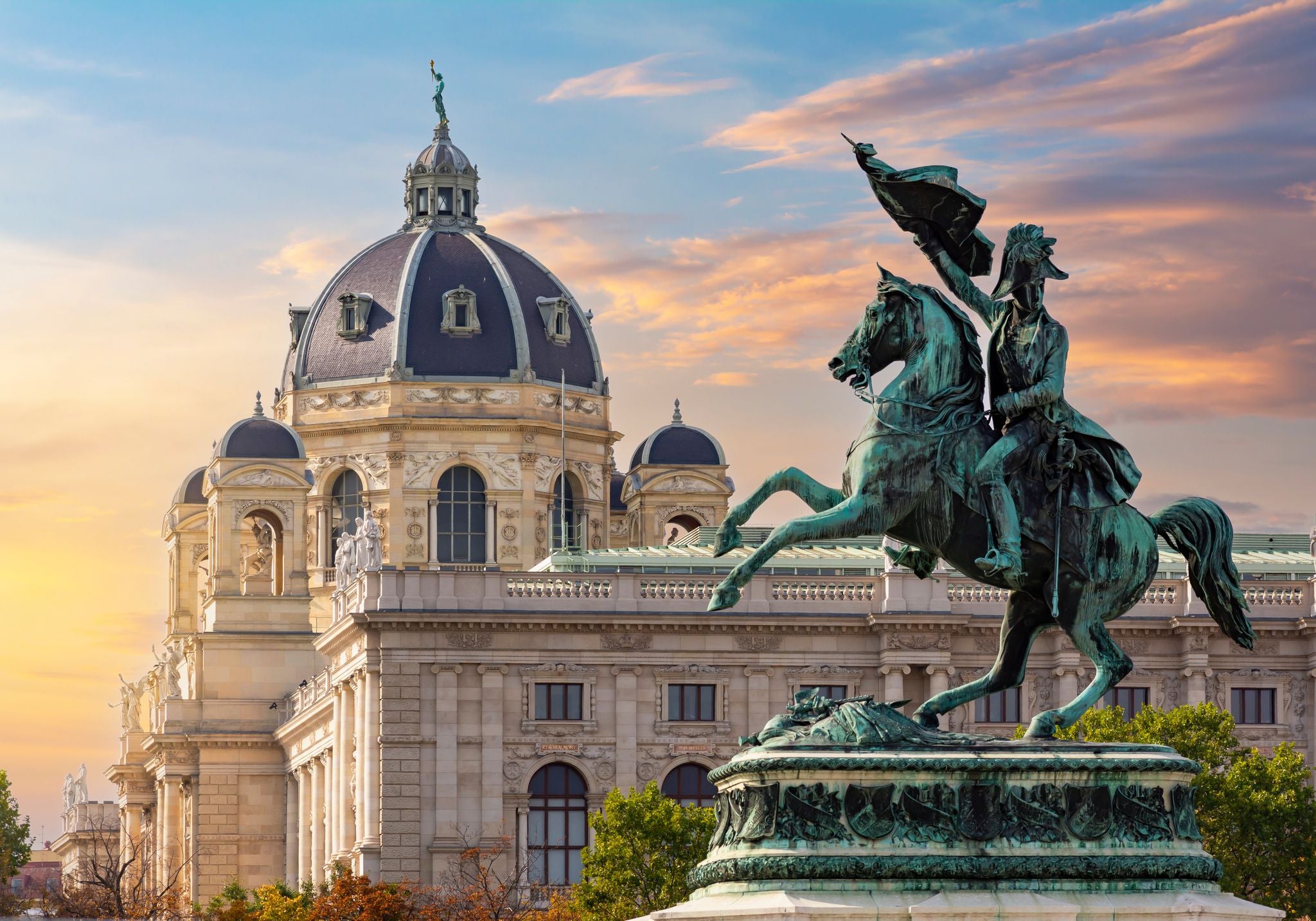
Vienna offers far more than its iconic palaces and museums; it's filled with hidden gems and surprising adventures that showcase the city’s unique character. Each experience invites you to see Vienna through a different lens, making your journey unlike any other.
The things to do in Vienna surprise and delight at every turn, whether you’re seeking history, immersing yourself in culture, or simply looking for something out of the ordinary. As you plan your visit, find everything you need to know about Vienna.
Explore itineraries in Vienna or learn about the best time to visit Vienna to make the most of your trip. With so many things to do in Vienna, there’s always something new to explore. Vienna is calling—let’s go!
